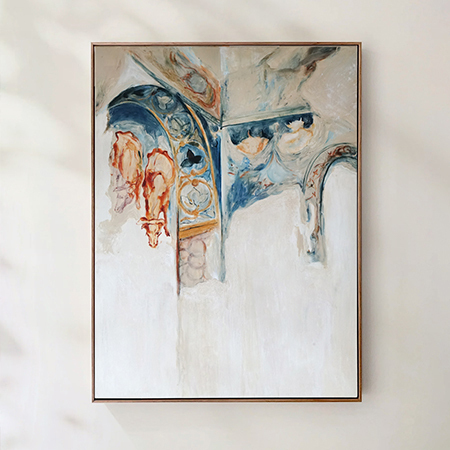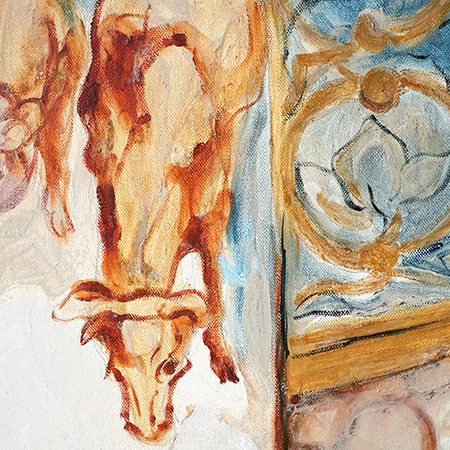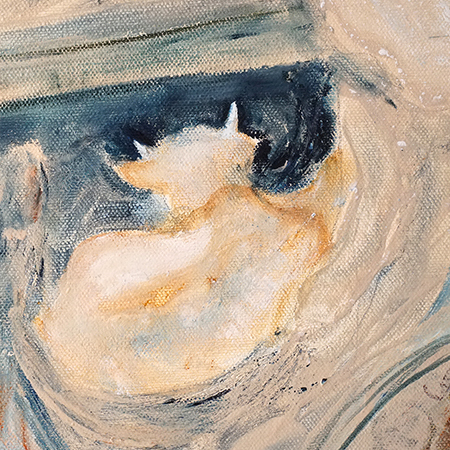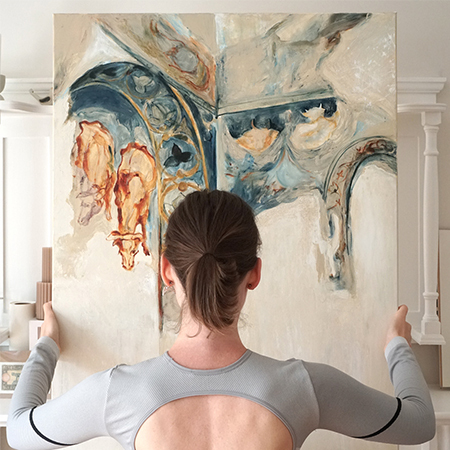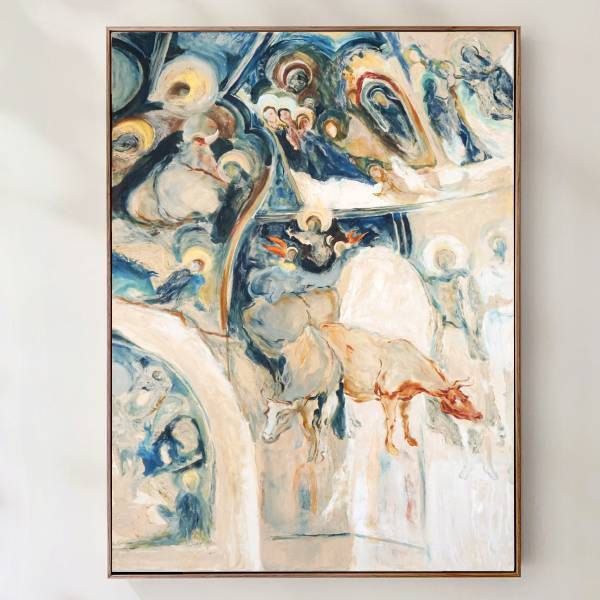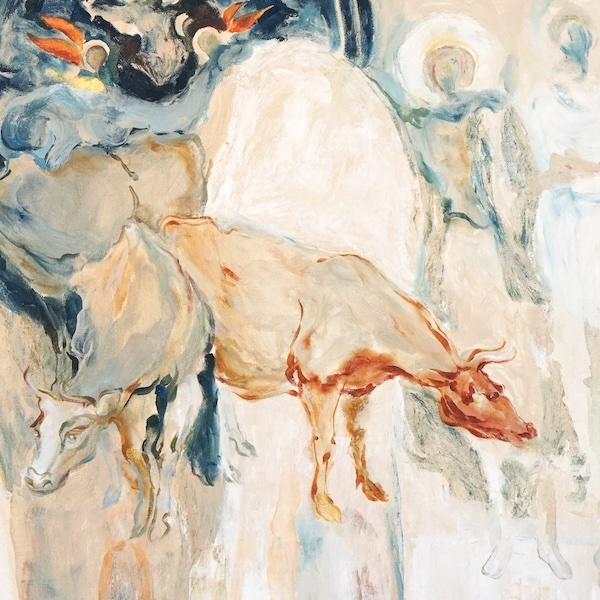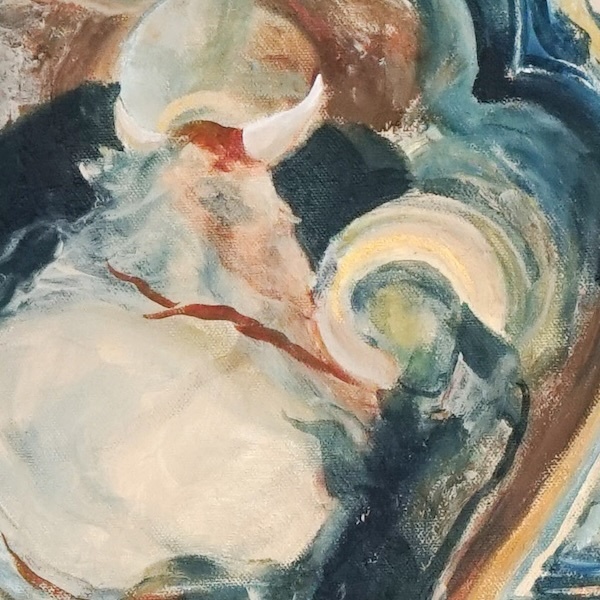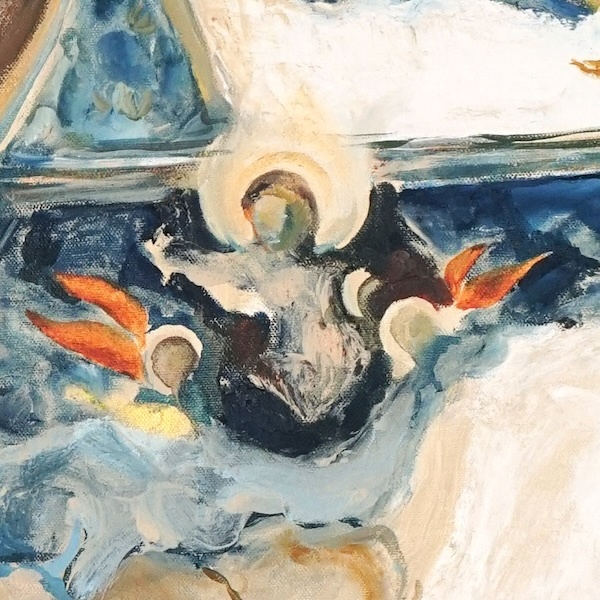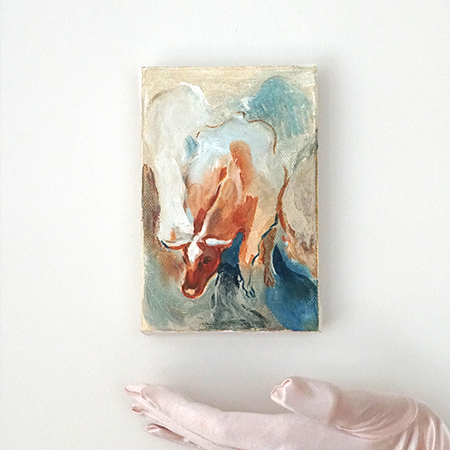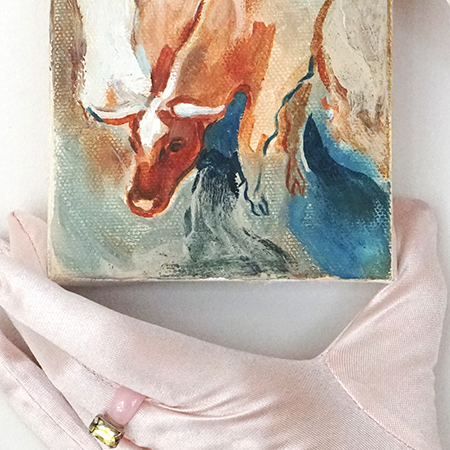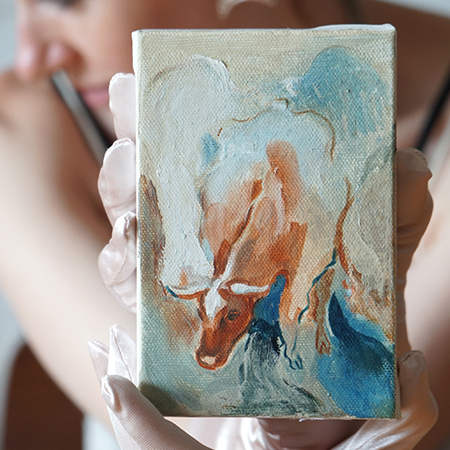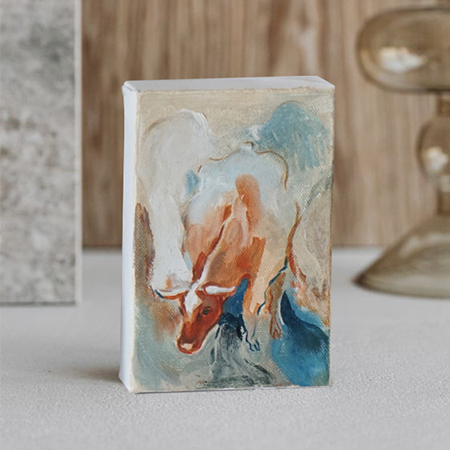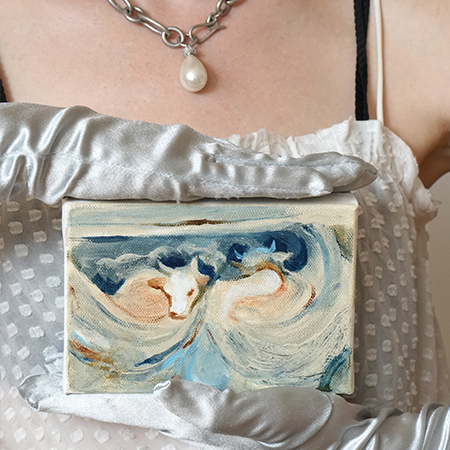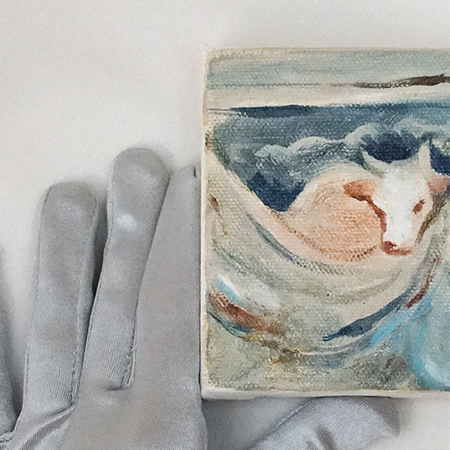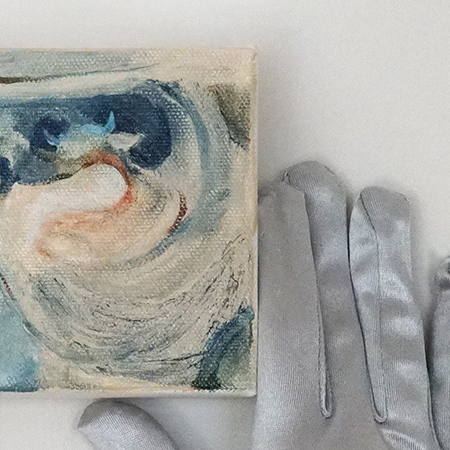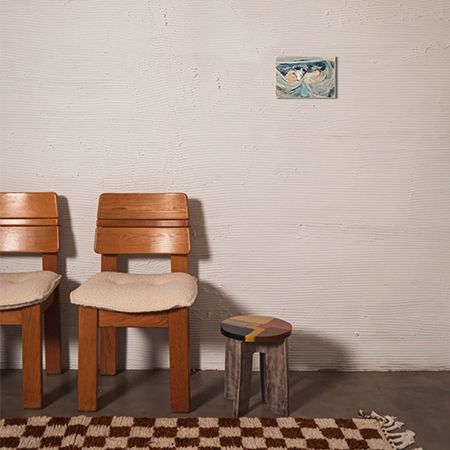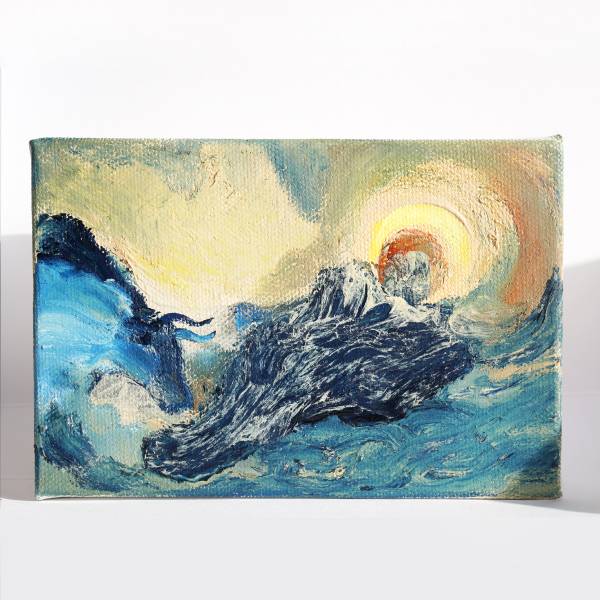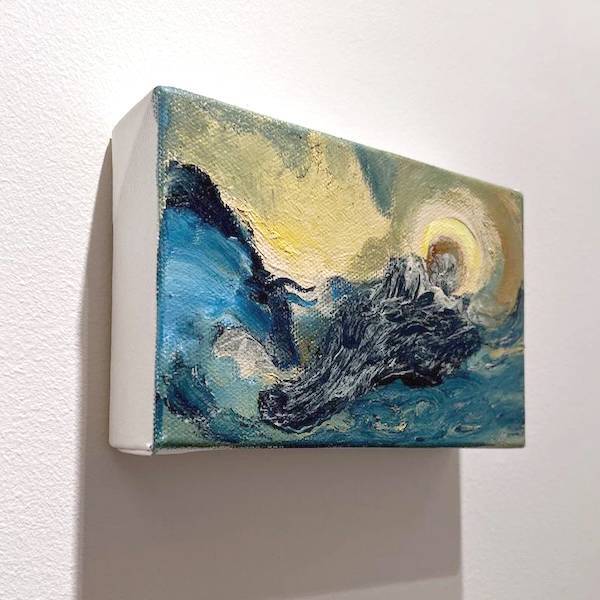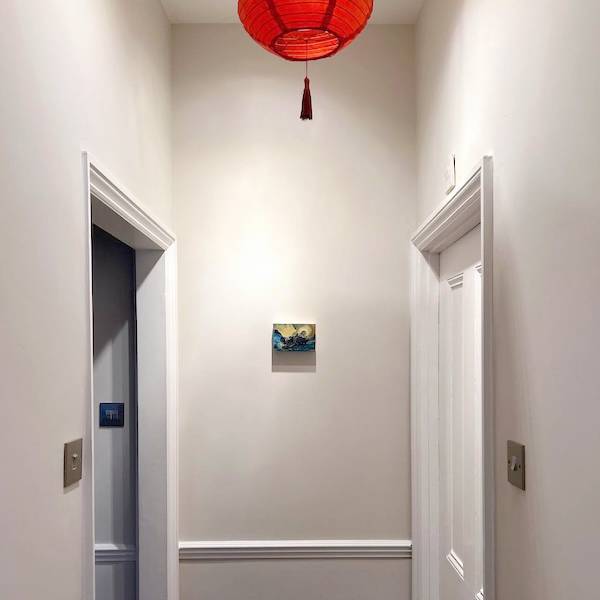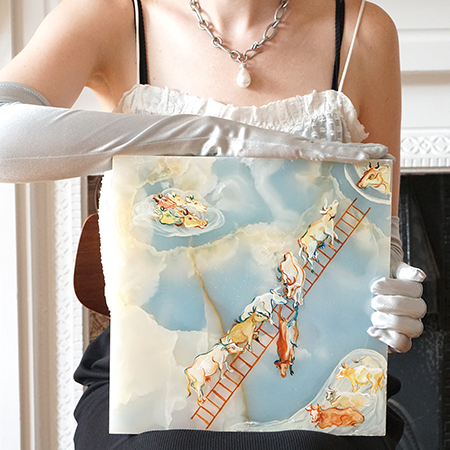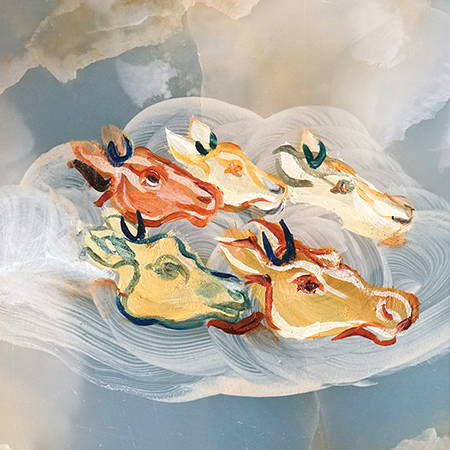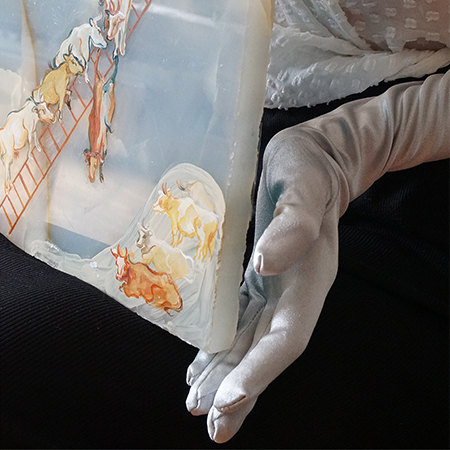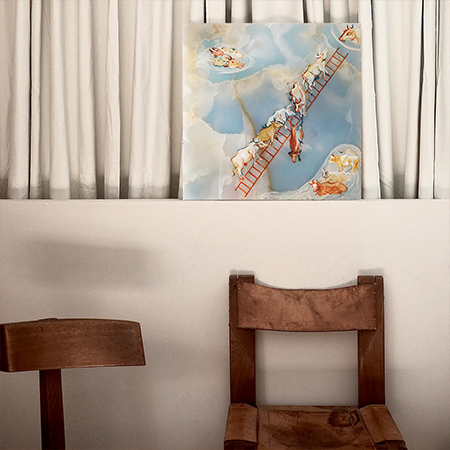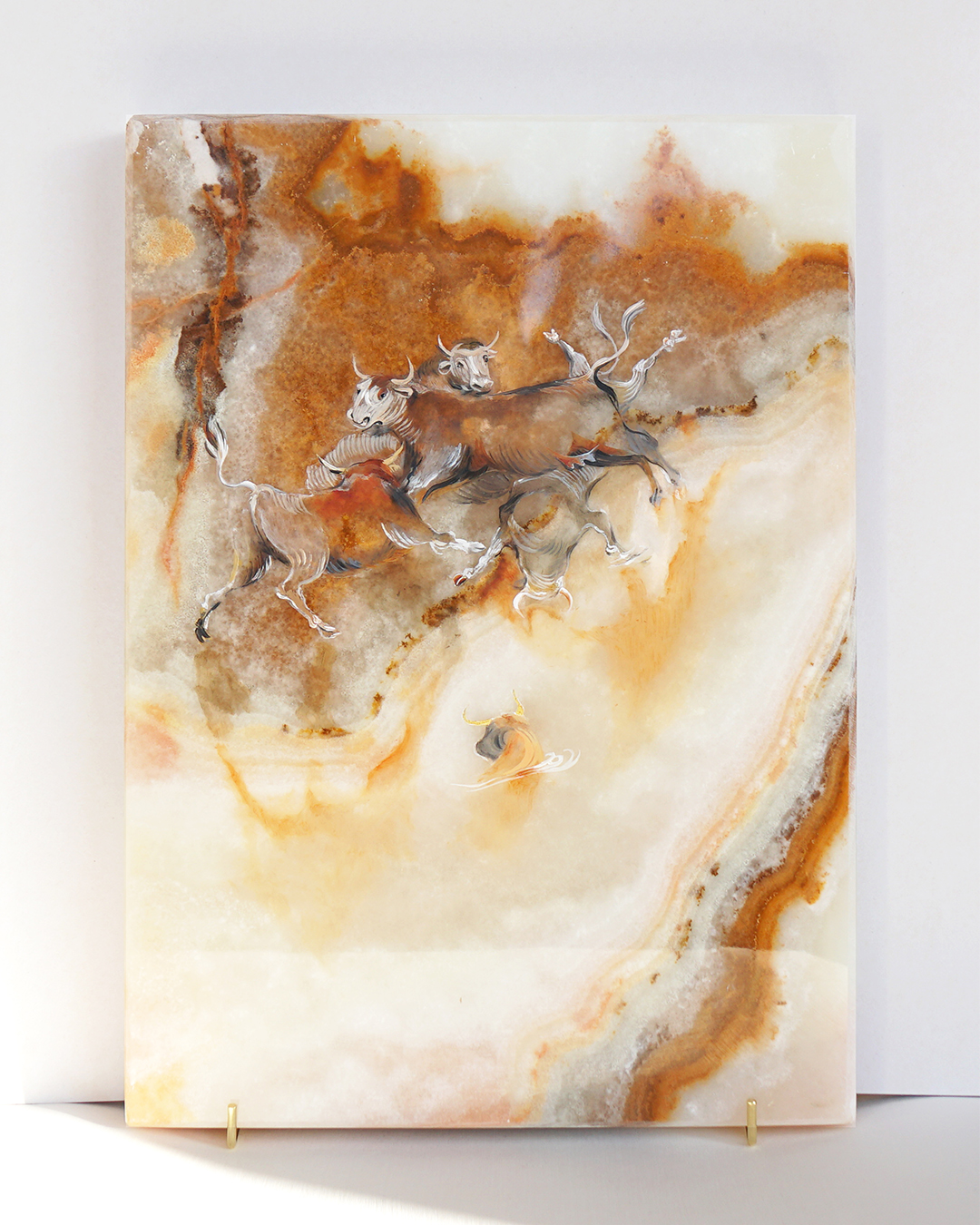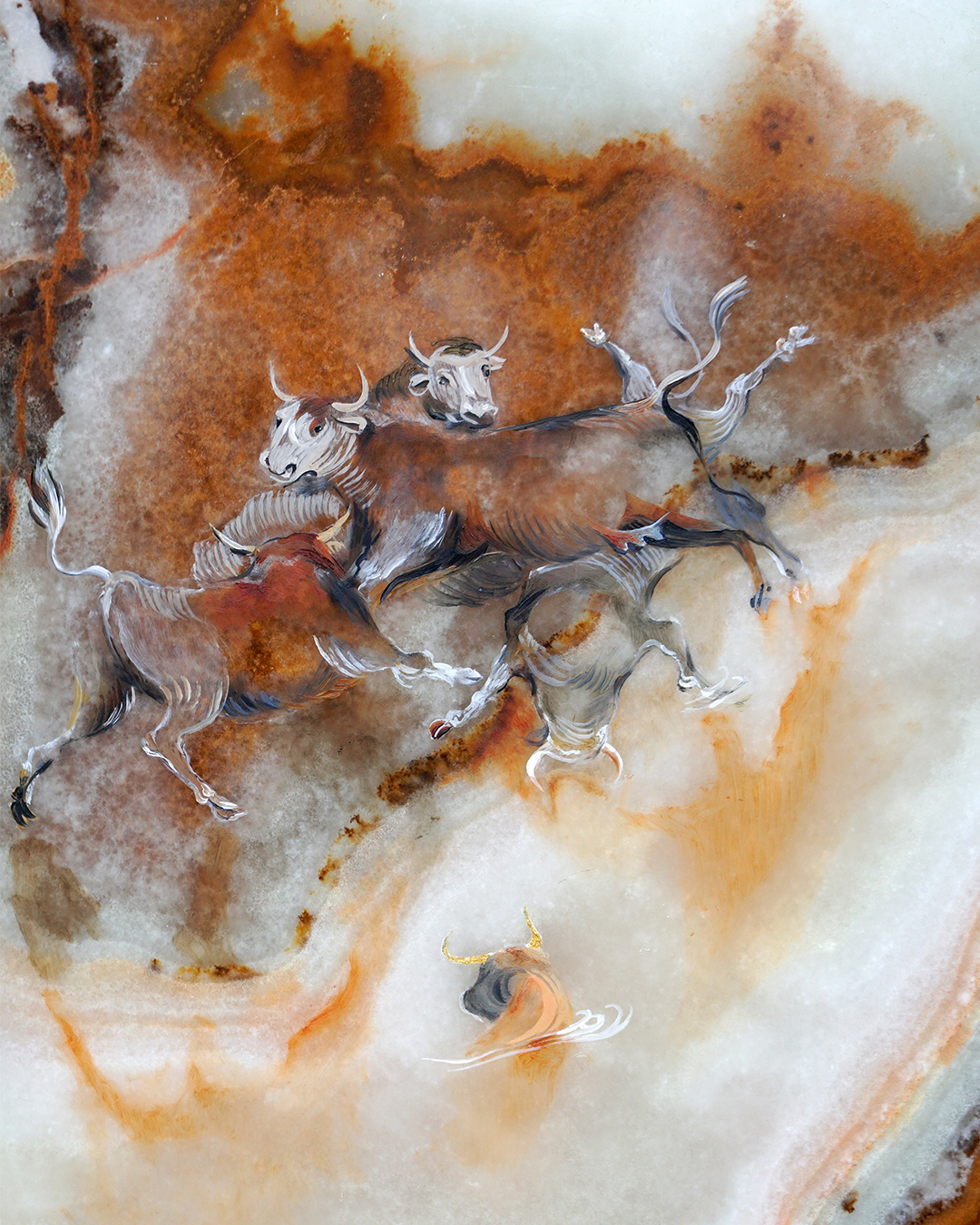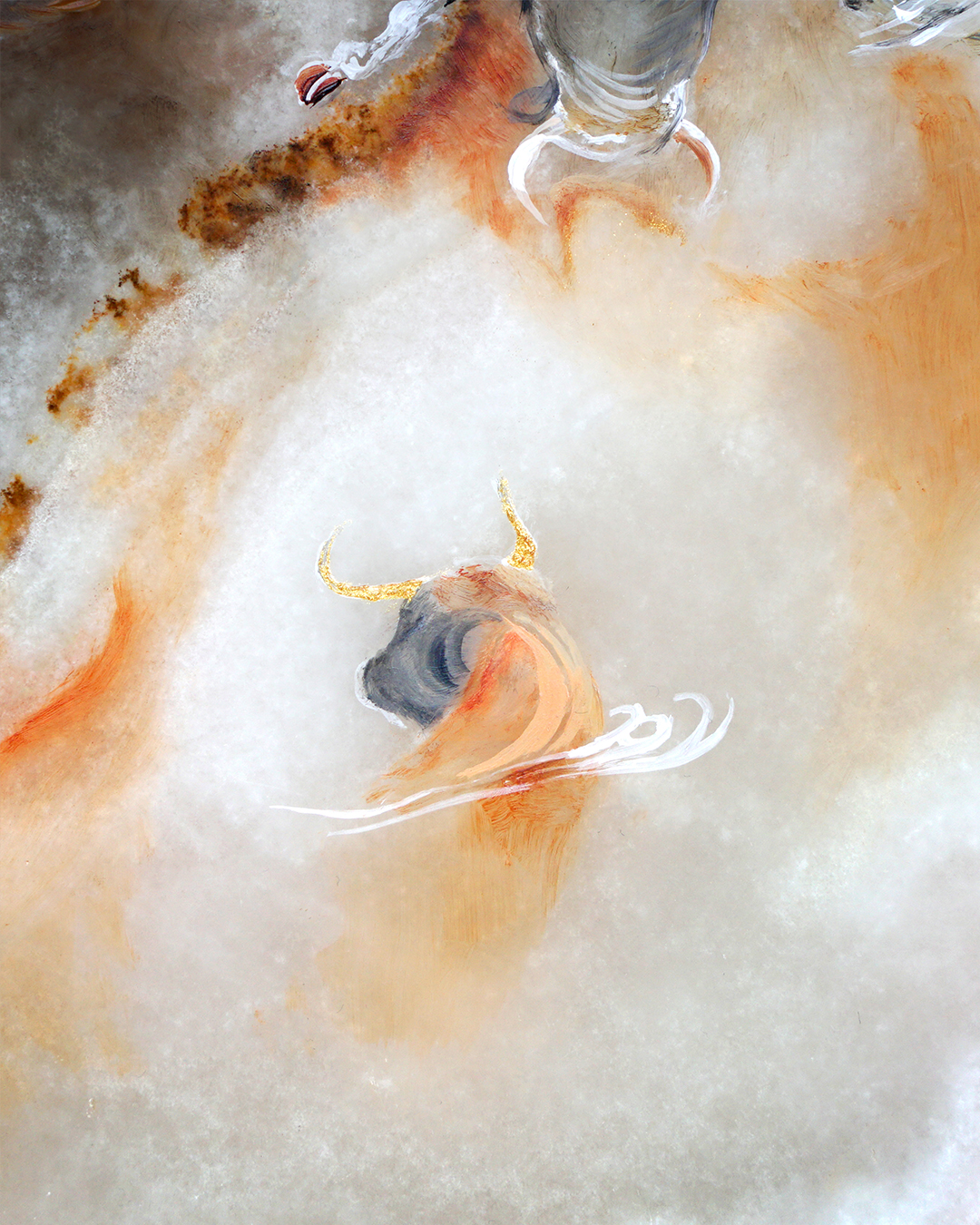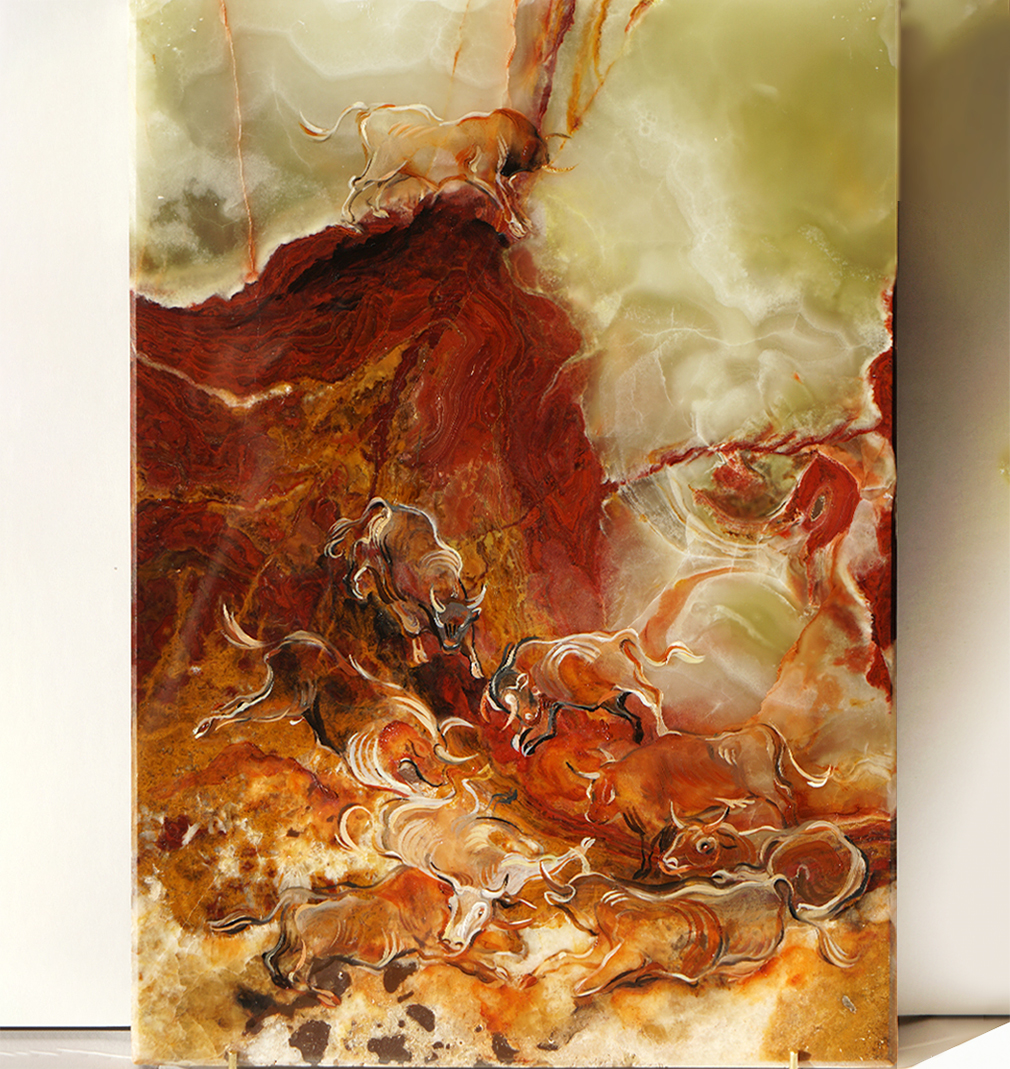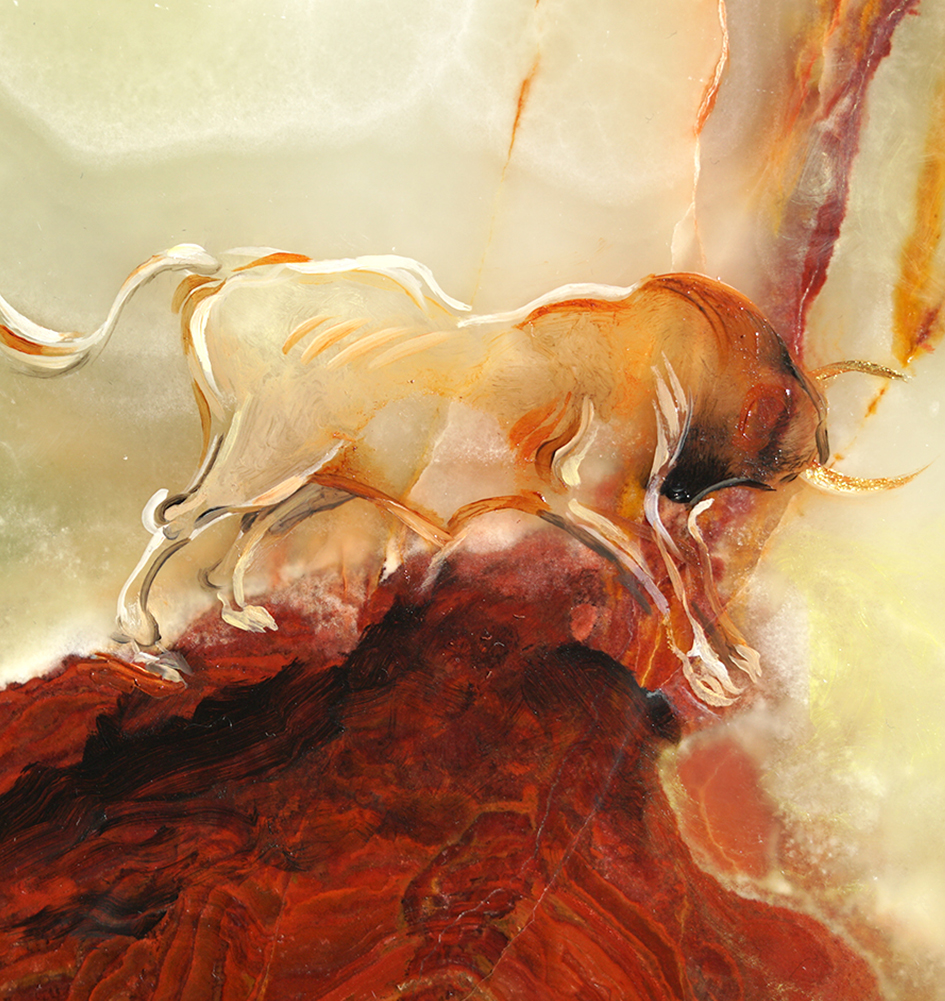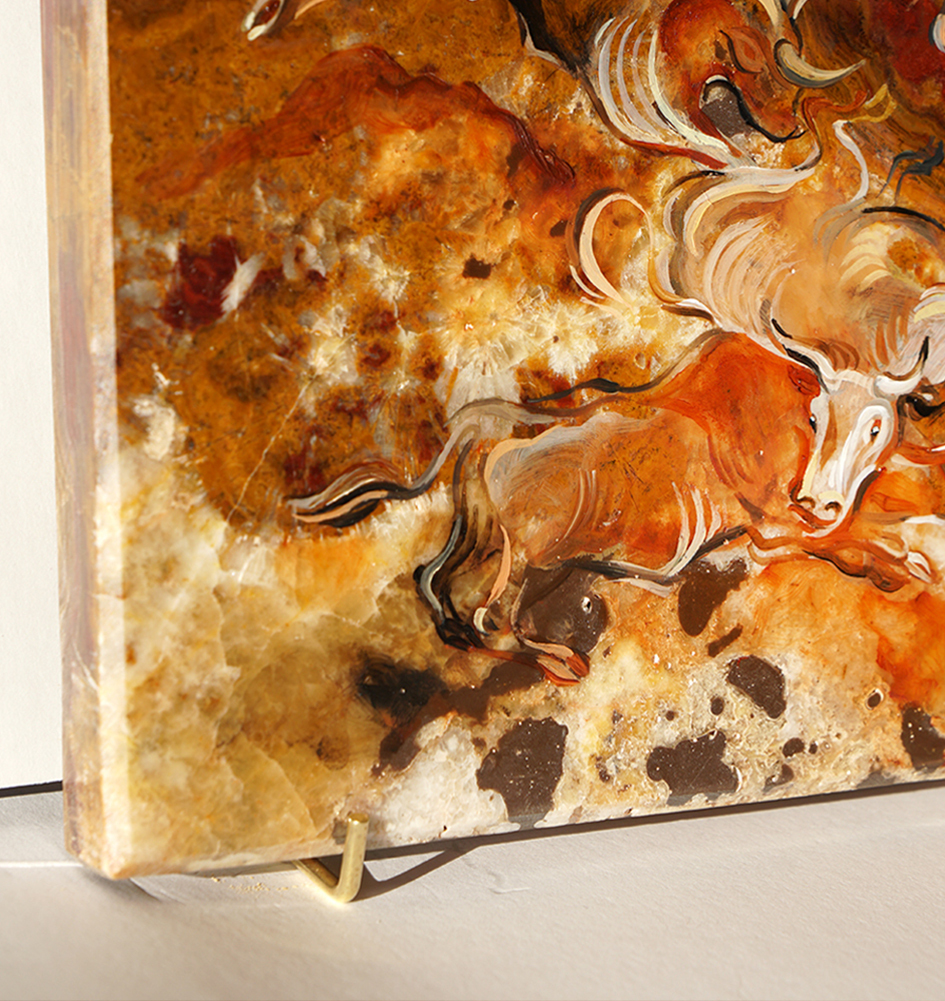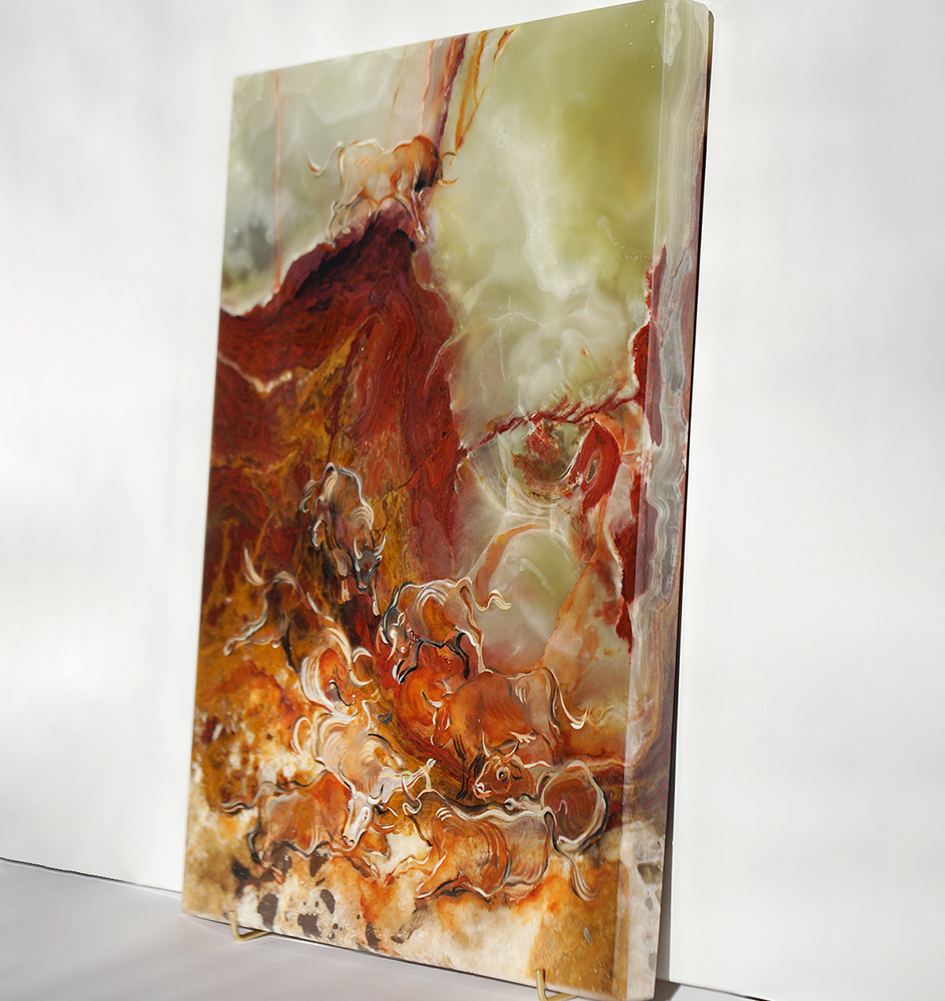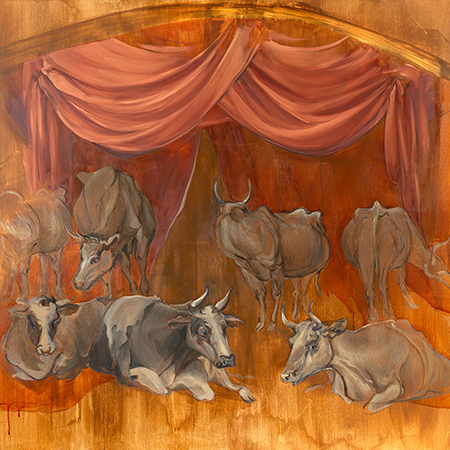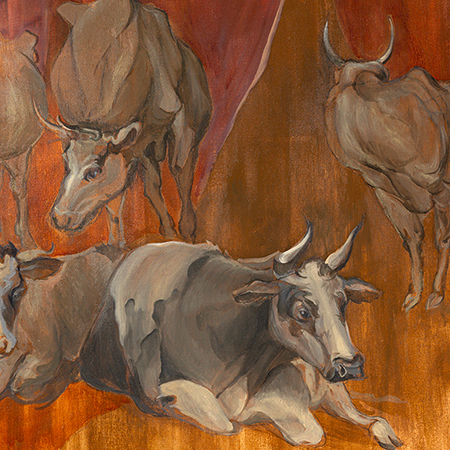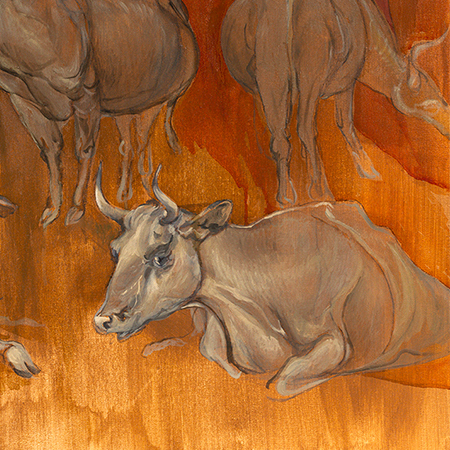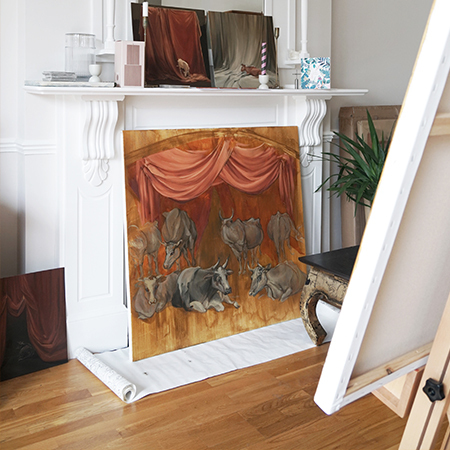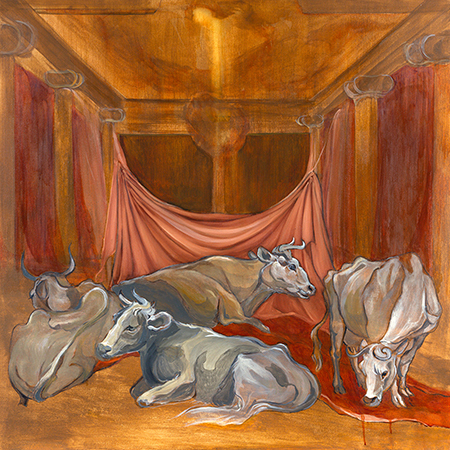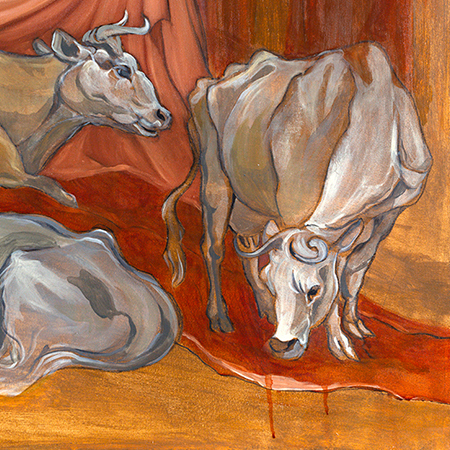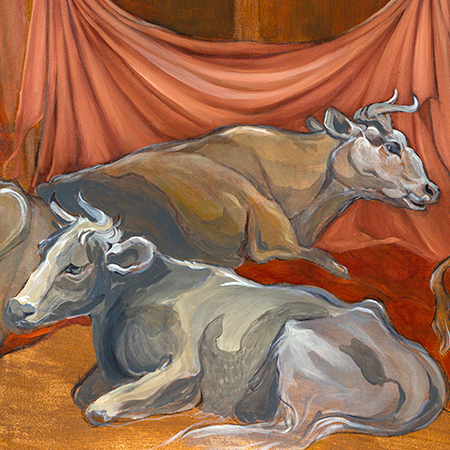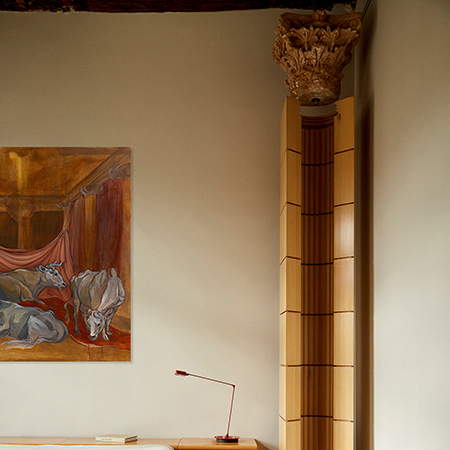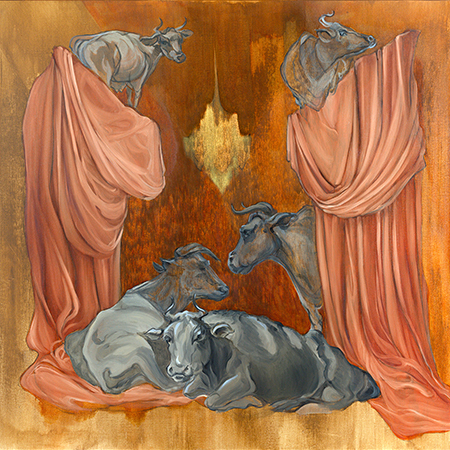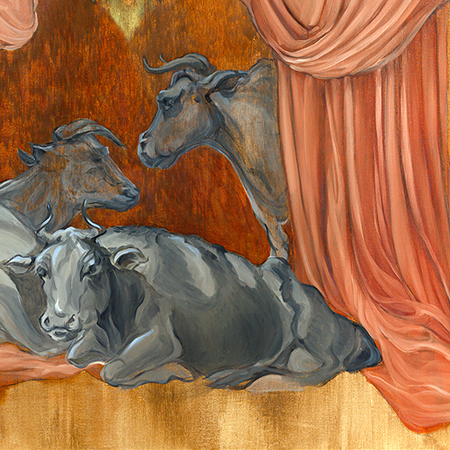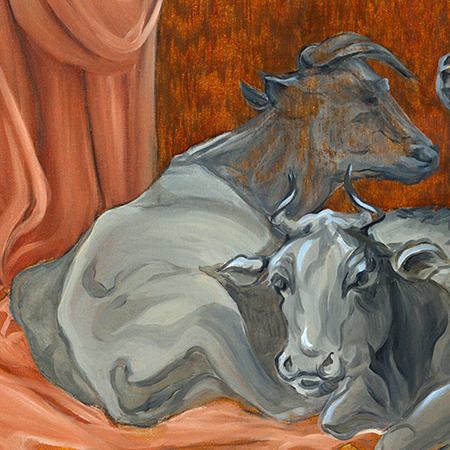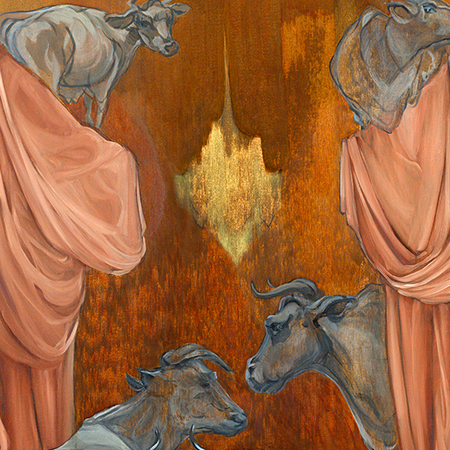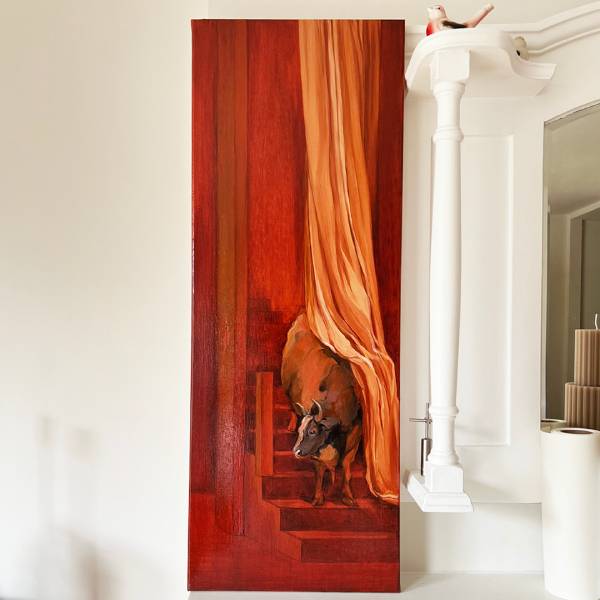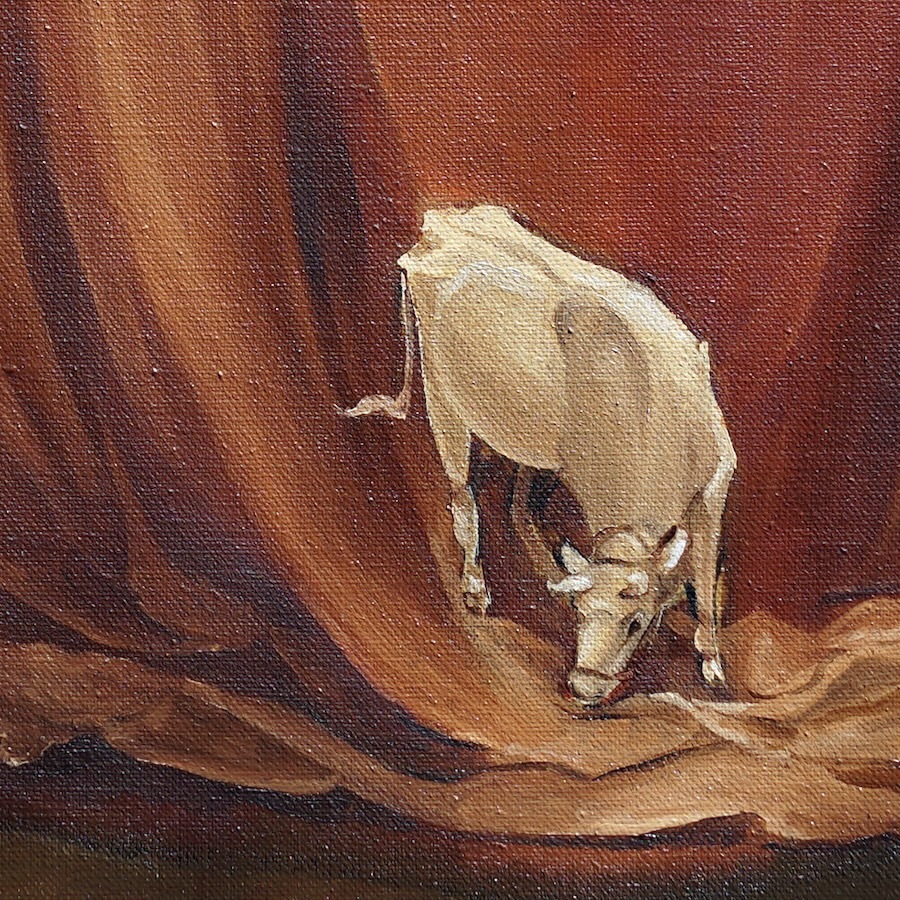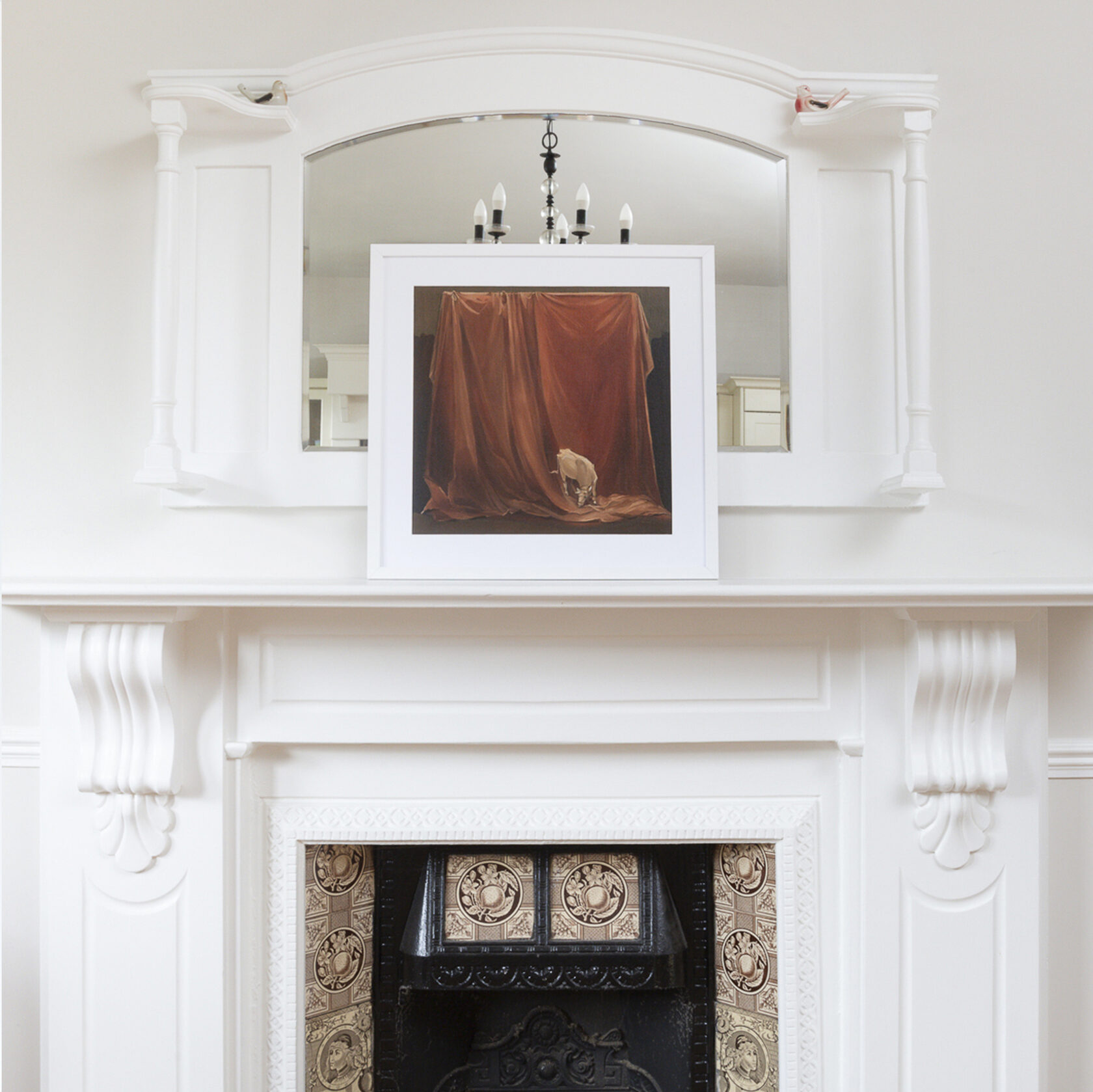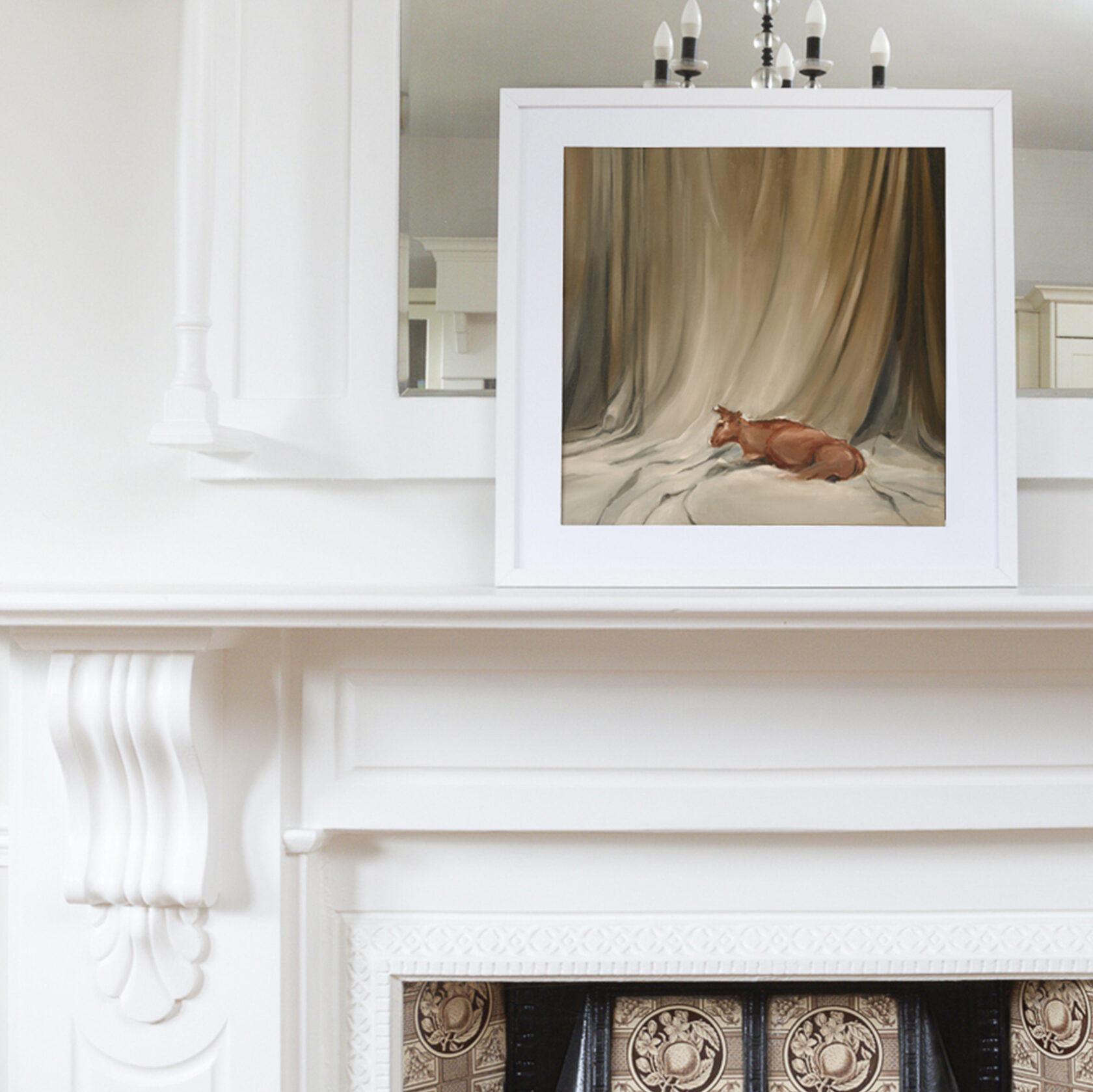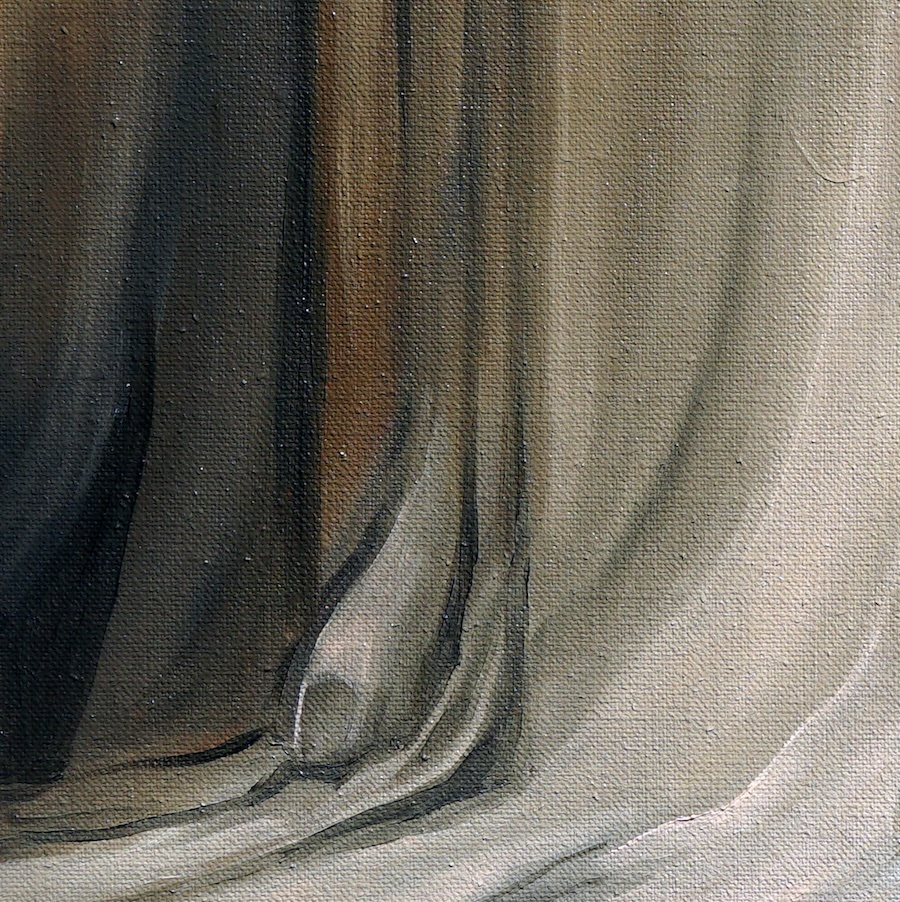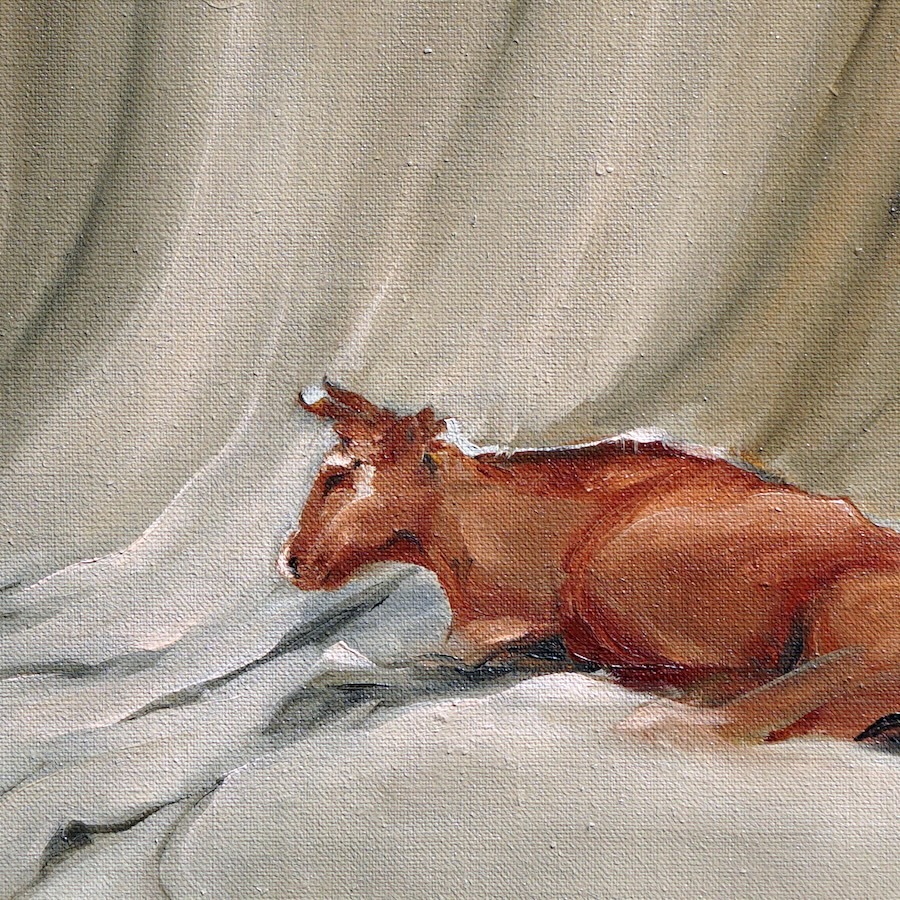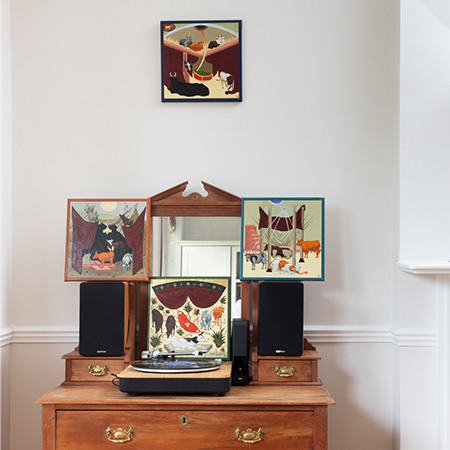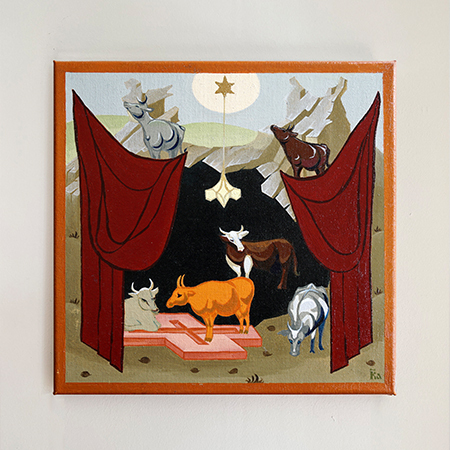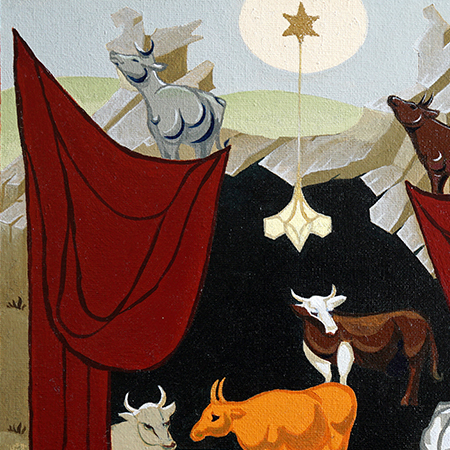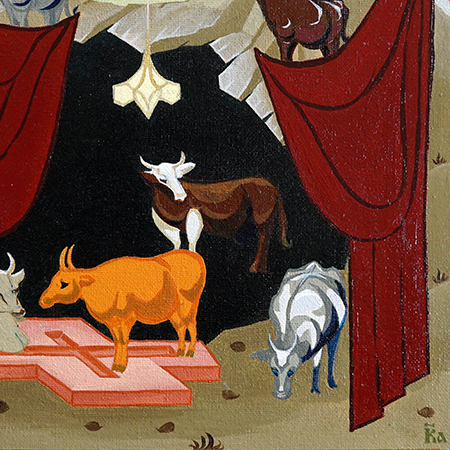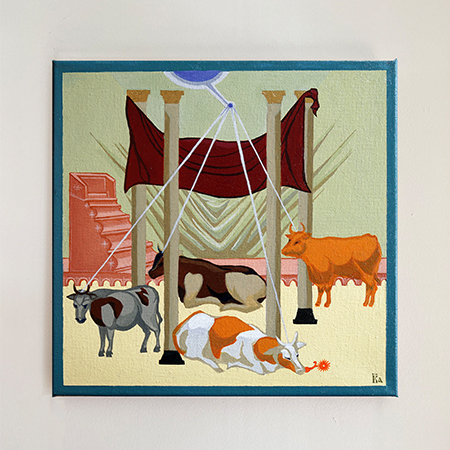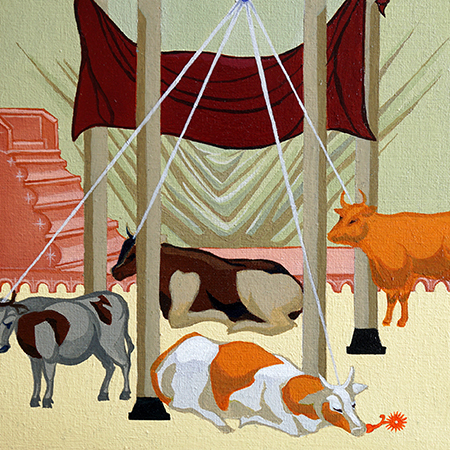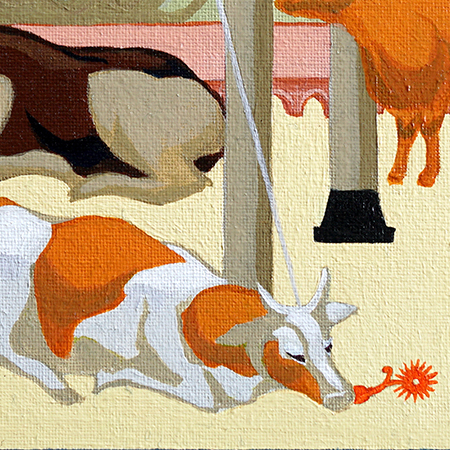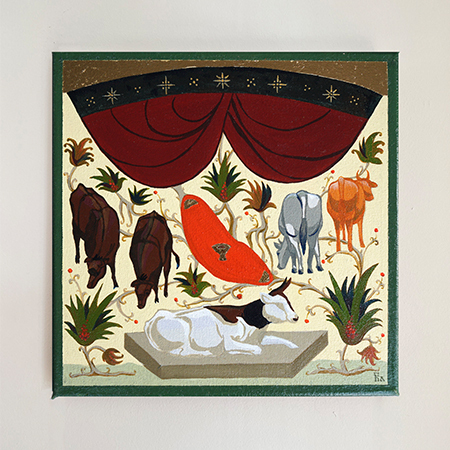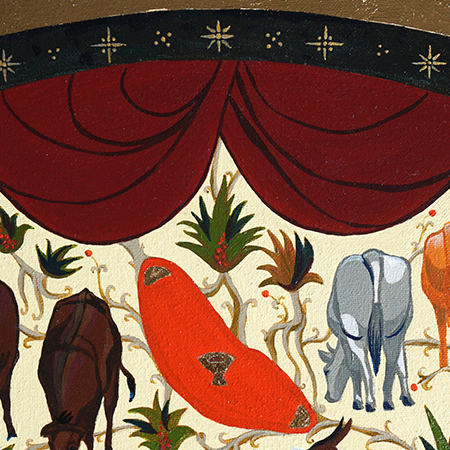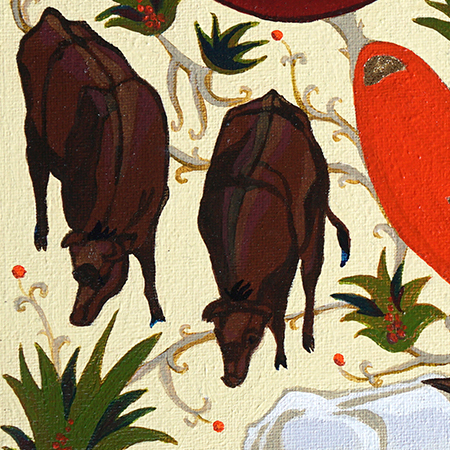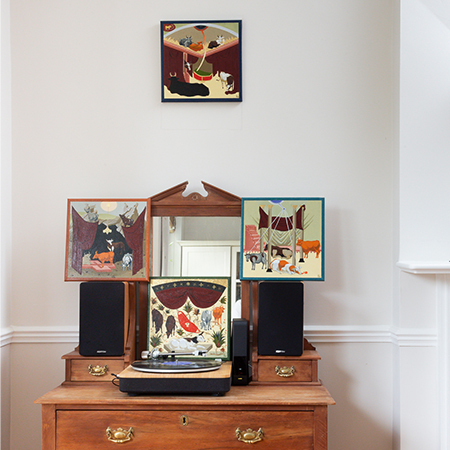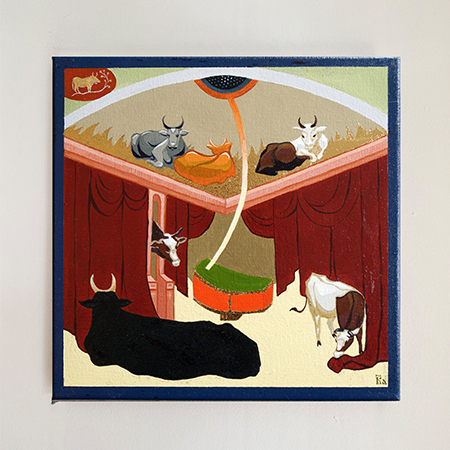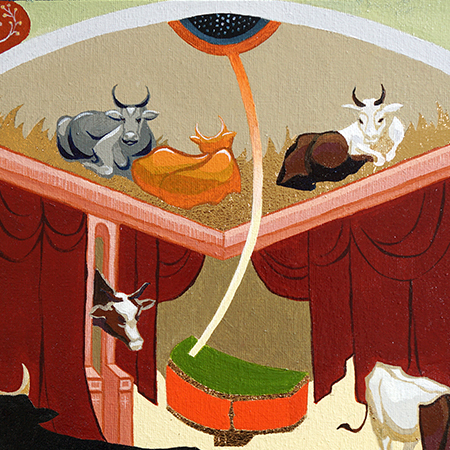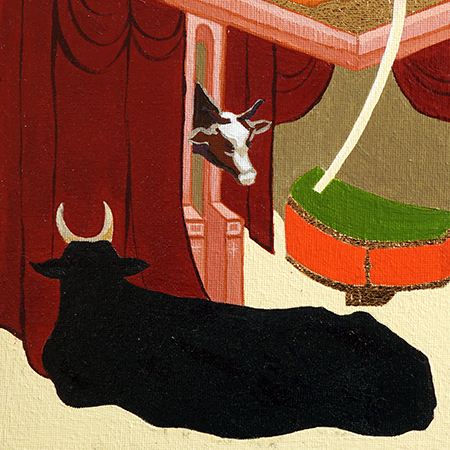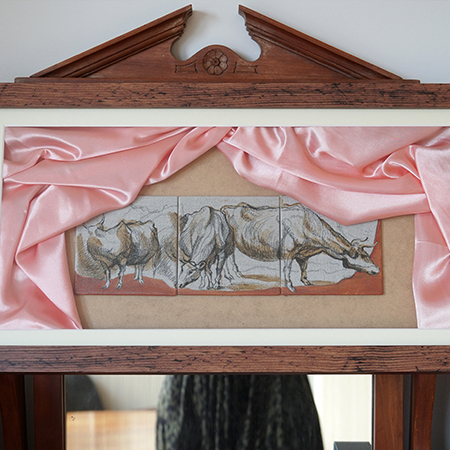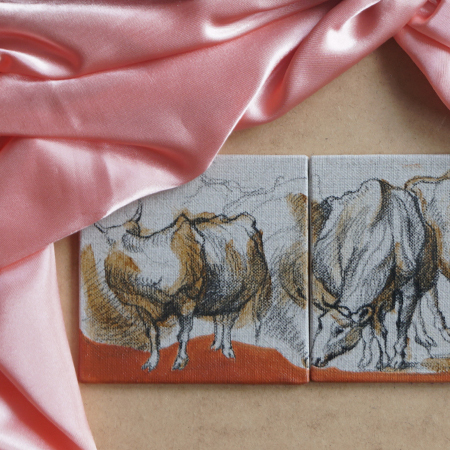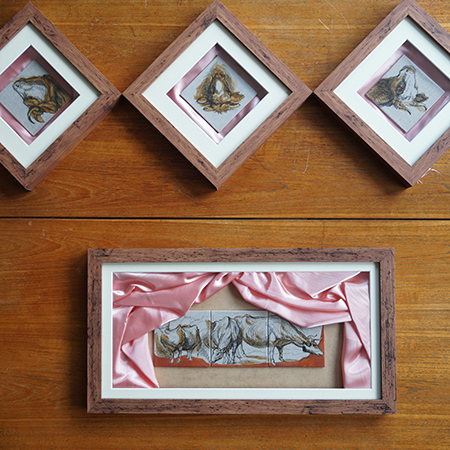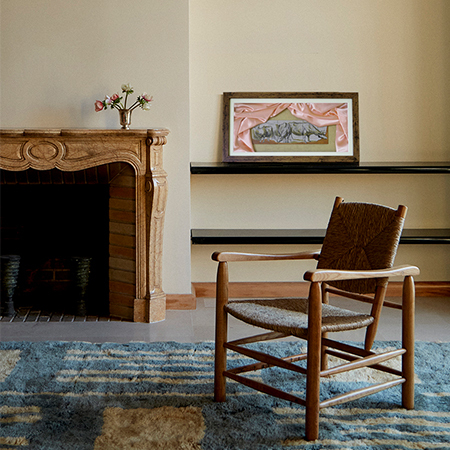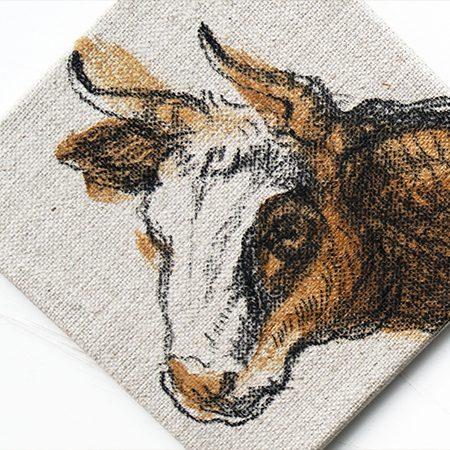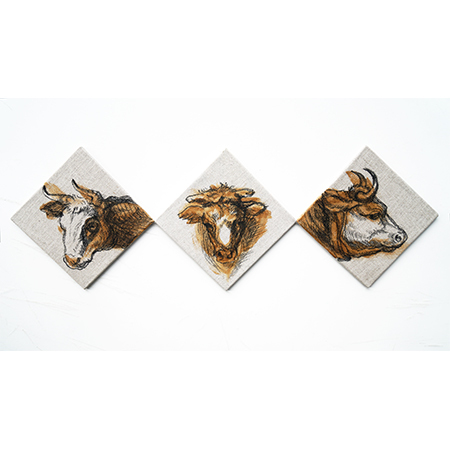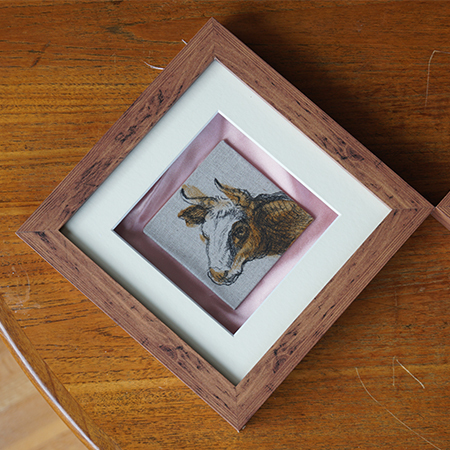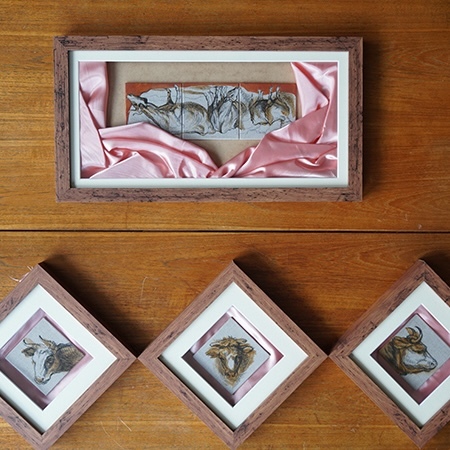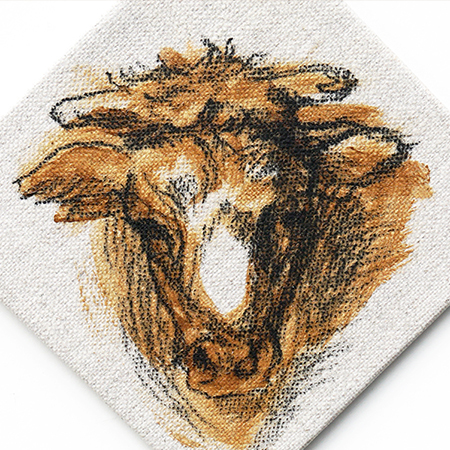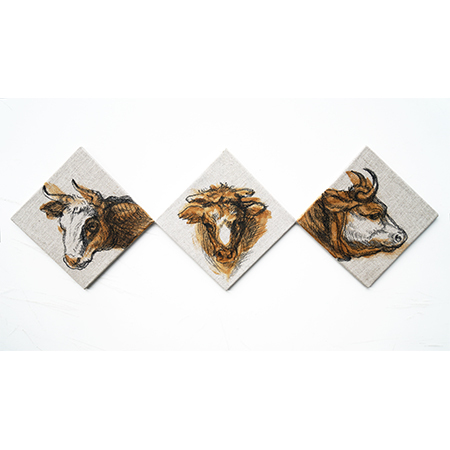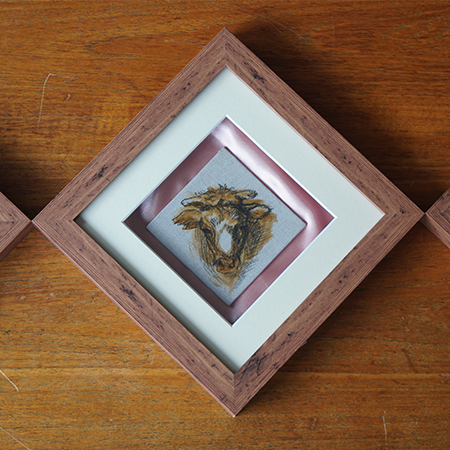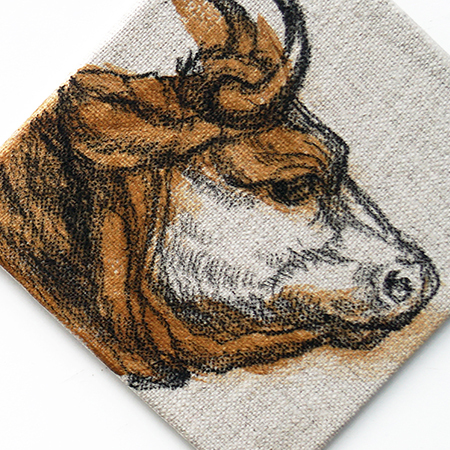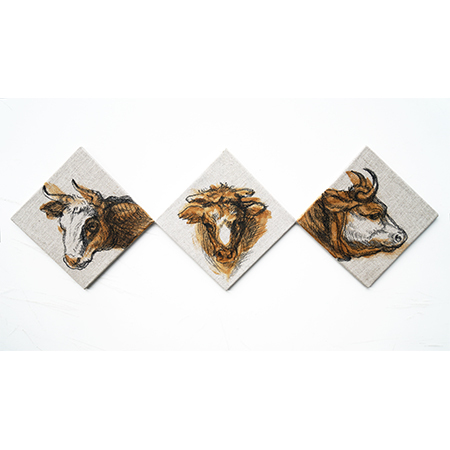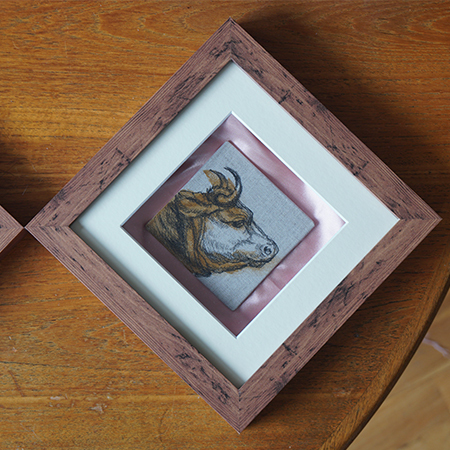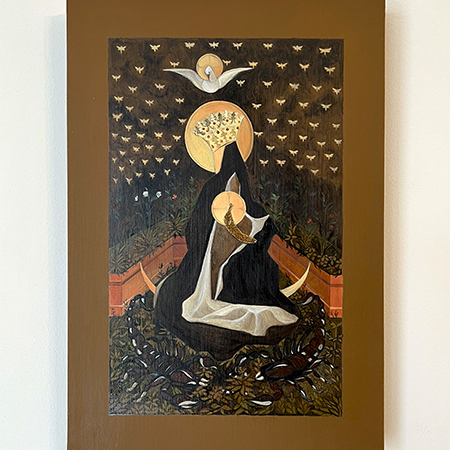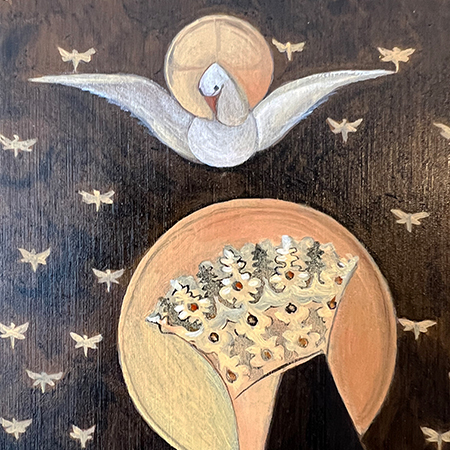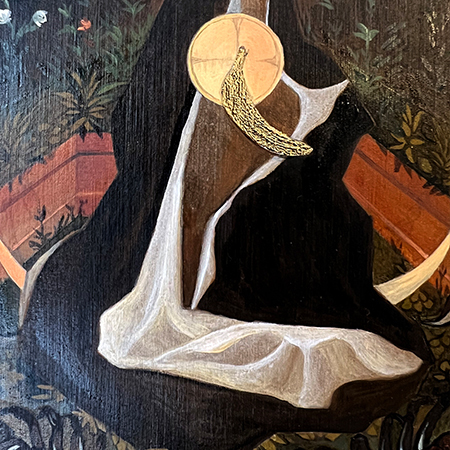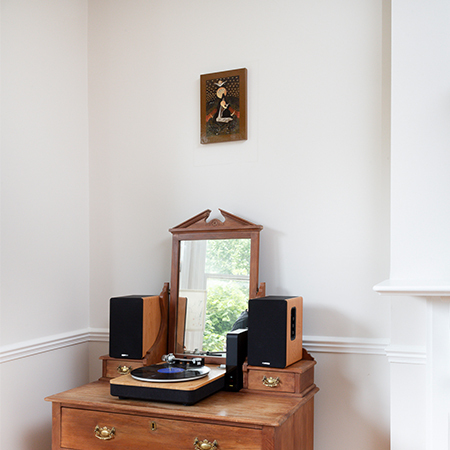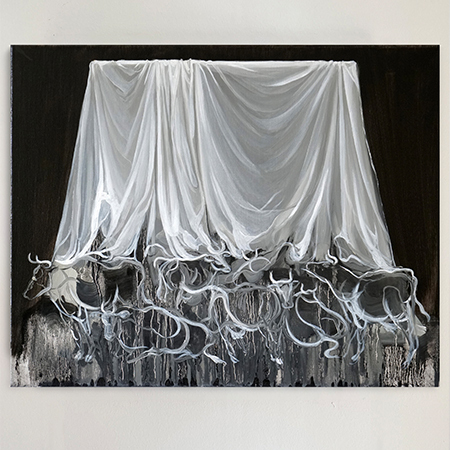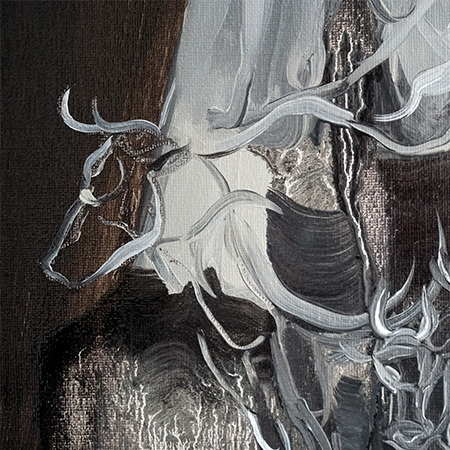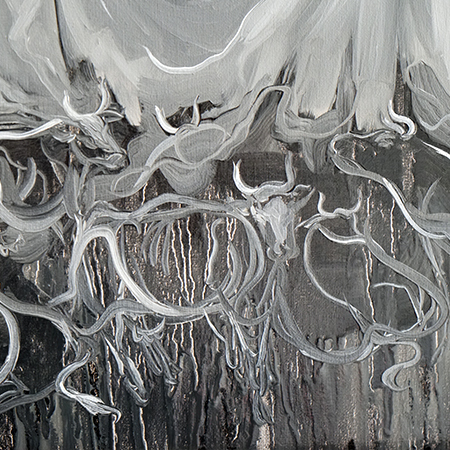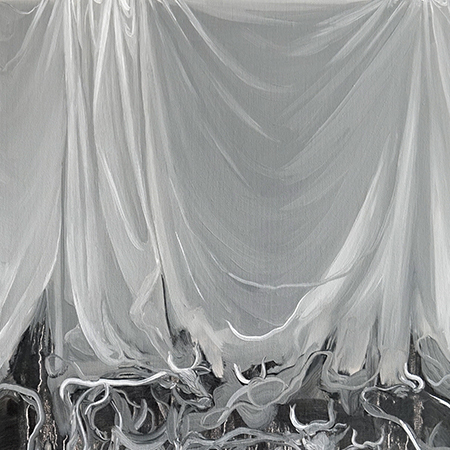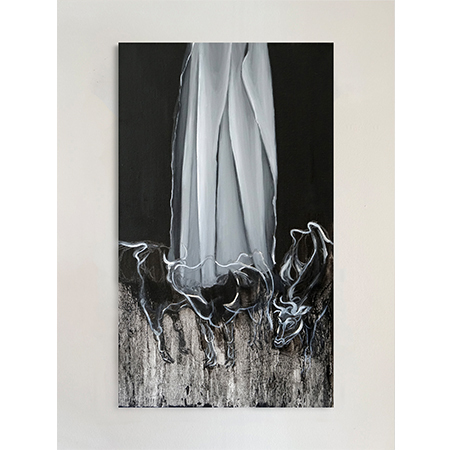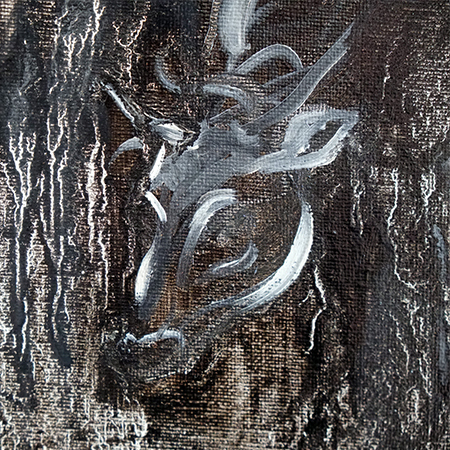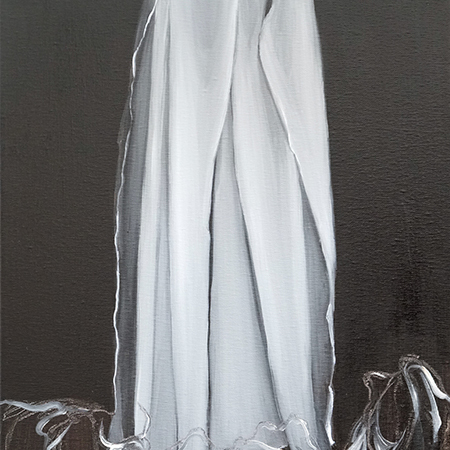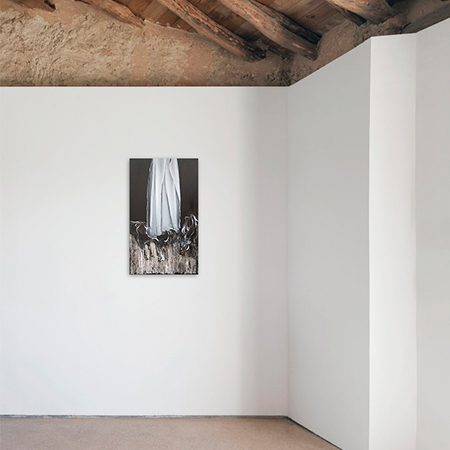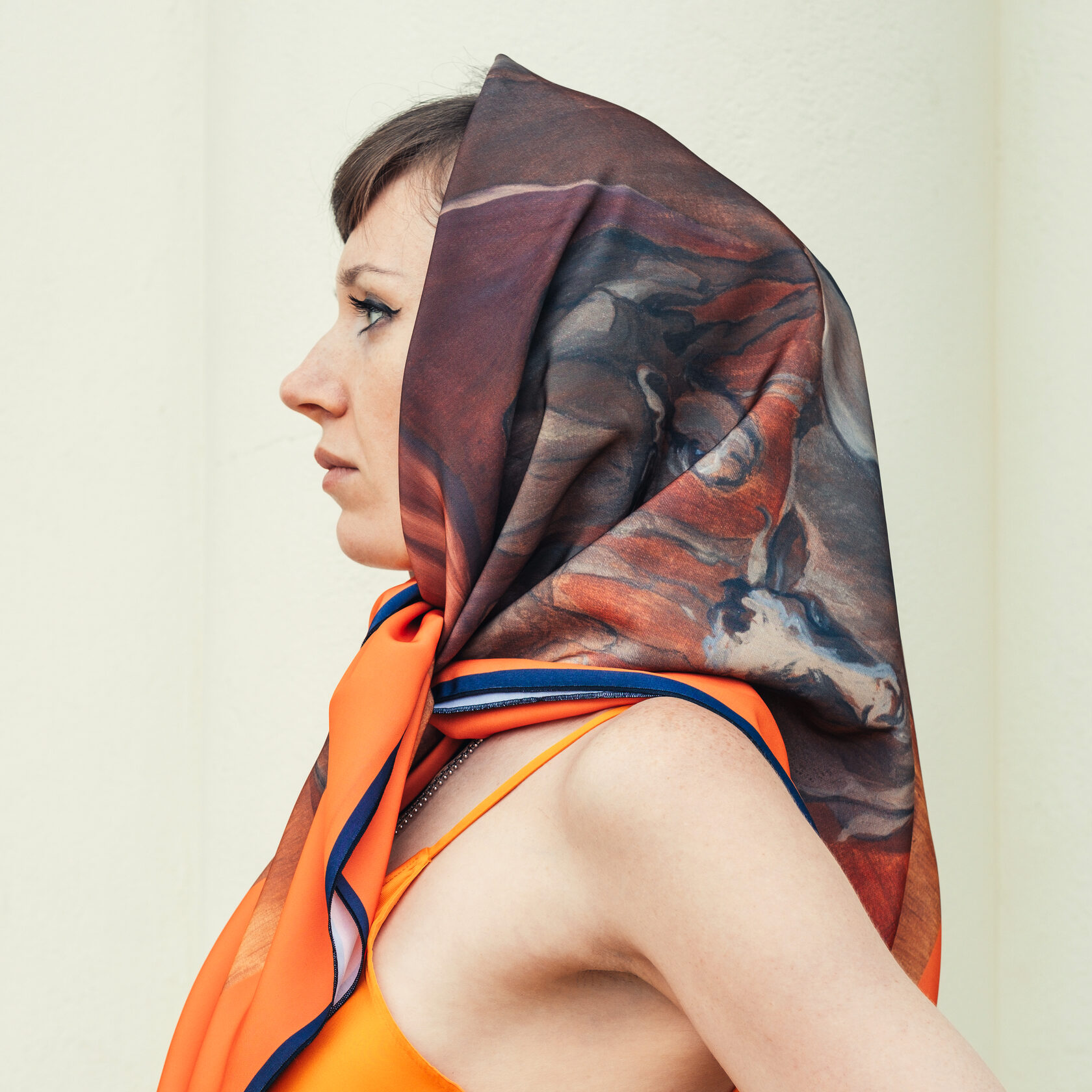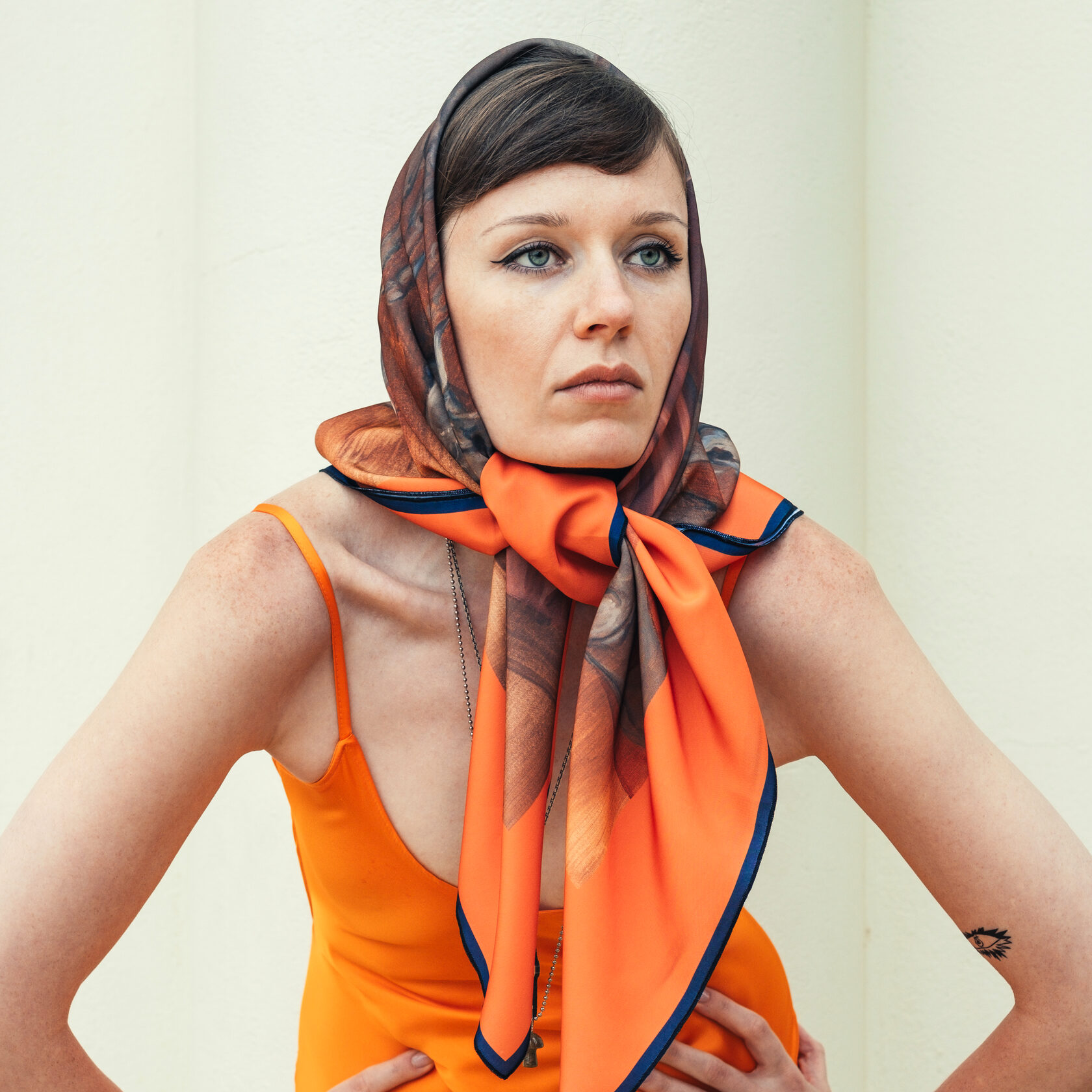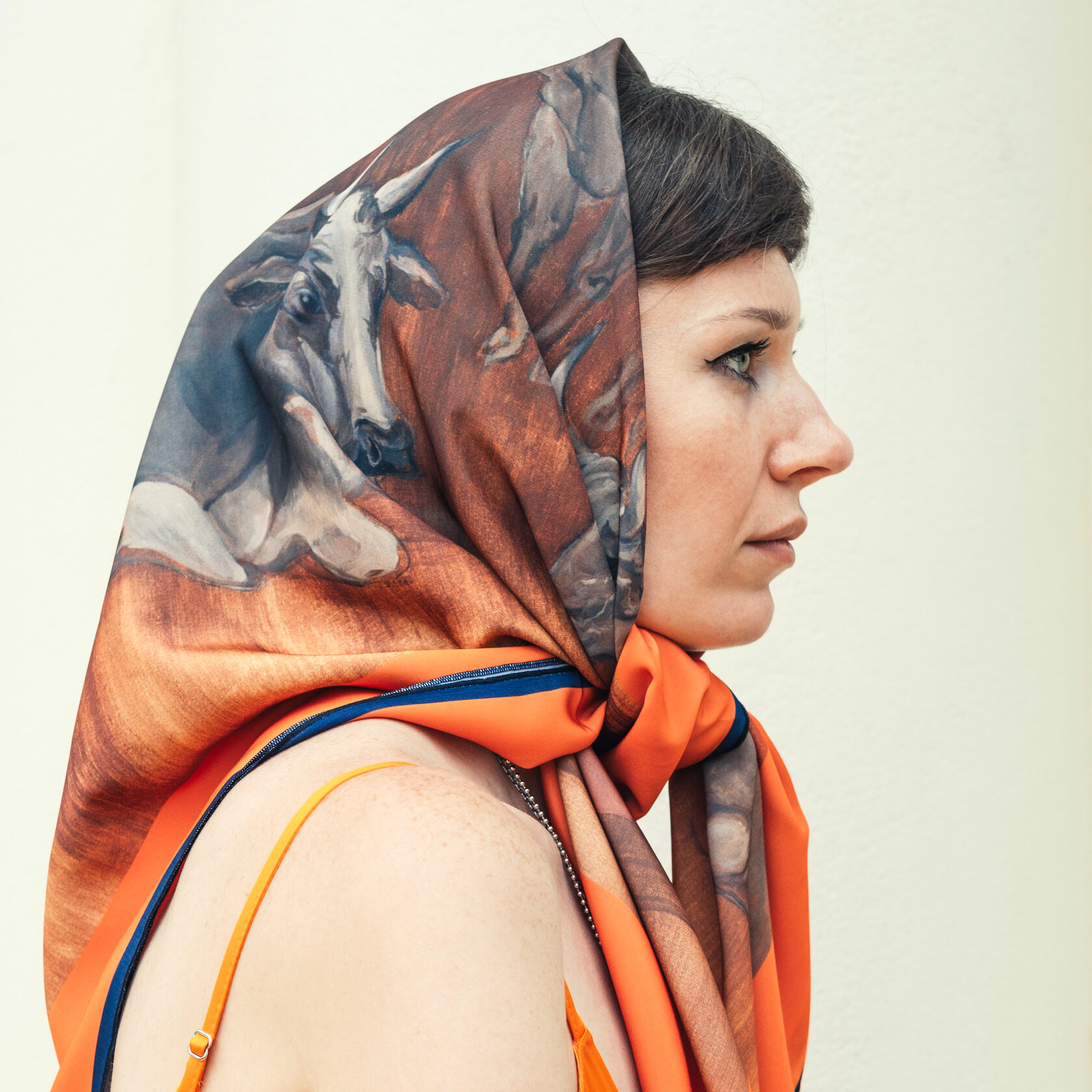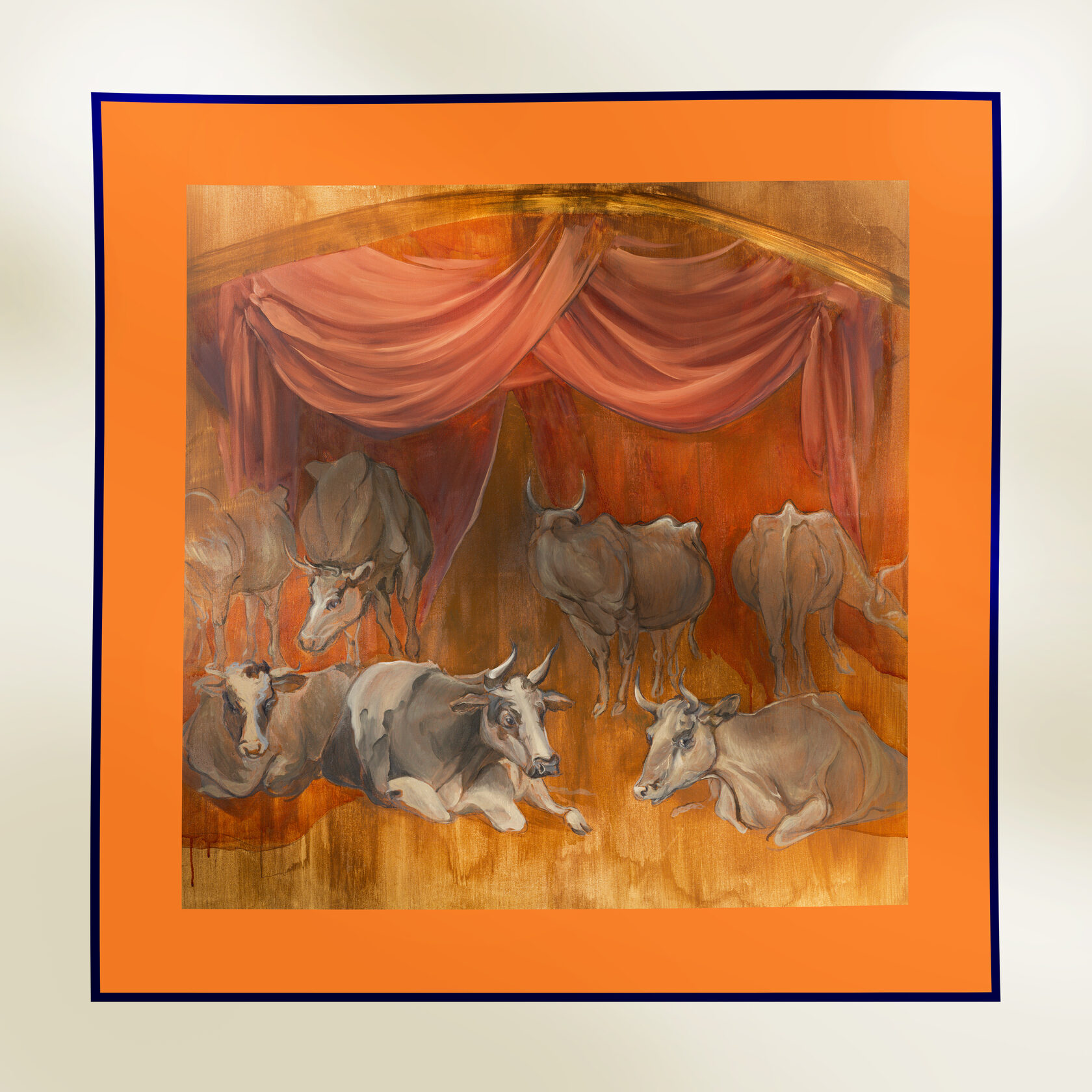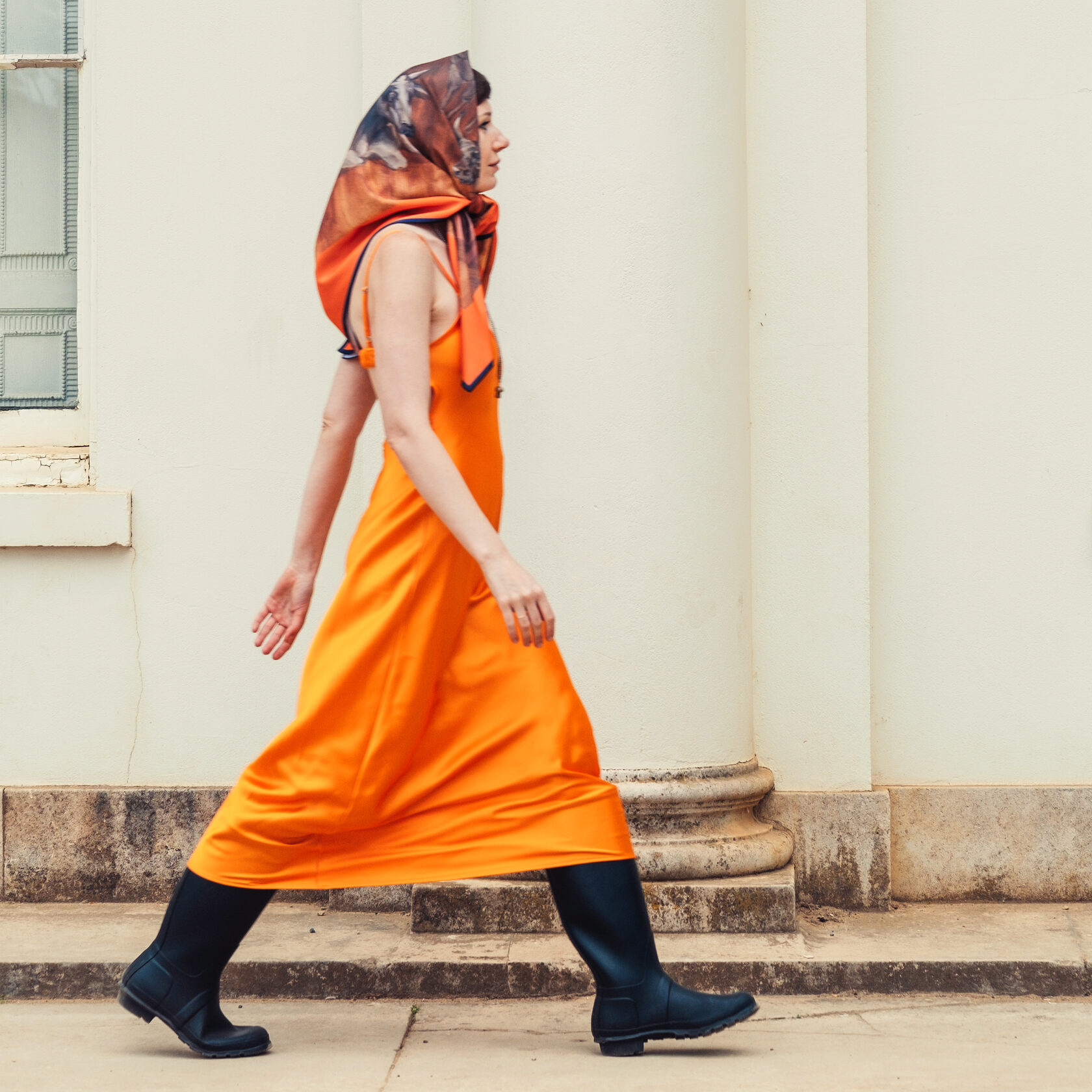Products
Where Do Sacred Cows Roam (BLUe Series)
More works are in progress
Oil, canvas 75 x 100 cm, 2024
SOLD TO A PRIVATE COLLECTION
The trinity
Oil, acrylic, canvas 10 x 15 cm, 2024
SOLD TO A PRIVATE COLLECTION
The COW WITH a Red and Blue Hoof
Oil, acrylic, canvas 10 x 15 cm, 2024
SOLD TO A PRIVATE COLLECTION
The Cow's Lullaby
SOLD TO A PRIVATE COLLECTION
Oil, acrylic, canvas 10 x 15 cm, 2024
Saint Jacob and the Cow
Oil, gold leaf, canvas, 2024
SOLD TO A PRIVATE COLLECTION
The Abduction of Saint Joseph
Onyx Series
Oil on blue onyx slab 30 x 30 cm, 2024
NOT FOR SALE
The JACOB's Ladder
The work recreates the canonical scene of the Baptism. The stone texture defines the placement of the river and the color palette. The drawing is executed with a three-hair brush, referencing Francisco Goya's etching Little Bulls' Folly. The reflections from the group of cows are rendered with an ultra-thin layer of burnt sienna oil on white onyx.
Oil on 2cm Honey Onyx slab, 20 x 27 cm, 2024
Oil on 2cm Honey Onyx slab, 20 x 27 cm, 2024
SOLD TO A PRIVATE COLLECTION
Baptism Ceremony
Onyx simultaneously serves as a stained glass, a sculpture, and an icon, with its natural patterns shaping the narrative: in Sinai, Moses receives the commandments; in Baptism, John calls for purification. Sacred, sacrificial, or a witness to the birth of a miracle—the cow remains a vivid, living symbol throughout the history of religions.
Oil and gold on onyx, 28 x 20 cm, 2025
Oil and gold on onyx, 28 x 20 cm, 2025
£670
SINai
cows in fresco (red series)
The series is inspired by the frescoes of the Villa of the Mysteries in Pompeii, renowned for their striking beauty and enduring natural red hue. The sacredness of the rituals depicted in the frescoes and the various interpretations surrounding this enigmatic site reflect the quest for the divine in each character, akin to the early religious narratives, revealing the mysteries of initiation rituals and sacrifice. The cow embodies symbols of sacrifice and sanctity, serving as a complex protagonist in the artist's interpretation of the red frescoes of the Mysteries.
Oil, canvas, gold pigment 100 x 100 cm, 2024
Oil, canvas, gold pigment 100 x 100 cm, 2024
£1220
Secret Ceremonies of the Villa of the Mysteries 1/3
The series is inspired by the frescoes of the Villa of the Mysteries in Pompeii, renowned for their striking beauty and enduring natural red hue. The sacredness of the rituals depicted in the frescoes and the various interpretations surrounding this enigmatic site reflect the quest for the divine in each character, akin to the early religious narratives, revealing the mysteries of initiation rituals and sacrifice. The cow embodies symbols of sacrifice and sanctity, serving as a complex protagonist in the artist's interpretation of the red frescoes of the Mysteries.
Oil, canvas, gold pigment 100 x 100 cm, 2024
Oil, canvas, gold pigment 100 x 100 cm, 2024
£1220
Secret Ceremonies of the Villa of the Mysteries 2/3
The series is inspired by the frescoes of the Villa of the Mysteries in Pompeii, renowned for their striking beauty and enduring natural red hue. The sacredness of the rituals depicted in the frescoes and the various interpretations surrounding this enigmatic site reflect the quest for the divine in each character, akin to the early religious narratives, revealing the mysteries of initiation rituals and sacrifice. The cow embodies symbols of sacrifice and sanctity, serving as a complex protagonist in the artist's interpretation of the red frescoes of the Mysteries.
Oil, canvas, gold pigment 100 x 100 cm, 2024
Oil, canvas, gold pigment 100 x 100 cm, 2024
£1220
Secret Ceremonies of the Villa of the Mysteries 3/3
The series is inspired by the frescoes of the Villa of the Mysteries in Pompeii, renowned for their striking beauty and enduring natural red hue.
Oil, canvas, 2024
Oil, canvas, 2024
SOLD TO A PRIVATE COLLECTION
Nude Descending a Staircase
The cow rests against the backdrop of a giant flag that constantly changes from red to white. 2024
Oil, linen canvas 40 x 40 cm,
framed 50 x 50 cm
Oil, linen canvas 40 x 40 cm,
framed 50 x 50 cm
SOLD TO A PRIVATE COLLECTION
RED Flag
£460
The cow rests against the backdrop of a giant flag that constantly changes from red to white. 2024
Oil, linen canvas 40 x 40 cm,
framed 50 x 50 cm
Oil, linen canvas 40 x 40 cm,
framed 50 x 50 cm
WHITE Flag
The Passion of the Cows (ICON SERIES)
The works in this series follow the canon of Christian Orthodox painting, employing multi-layered colour application and natural gilding. The unique use of reverse perspective makes the viewer an observer of a sacred New Testament scene, where cows witness the holy actions and replace the images of angels and saints.
Oil, canvas, gold leaf 30 x 30 cm, 2023
Oil, canvas, gold leaf 30 x 30 cm, 2023
SOLD TO A PRIVATE COLLECTION
CHRISTMAS
The works in this series follow the canon of Christian Orthodox painting, employing multi-layered colour application and natural gilding. The unique use of reverse perspective makes the viewer an observer of a sacred New Testament scene, where cows witness the holy actions and replace the images of angels and saints.
Oil, canvas, gold leaf 30 x 30 cm, 2023
Oil, canvas, gold leaf 30 x 30 cm, 2023
£330
Presentation of Mary
The works in this series follow the canon of Christian Orthodox painting, employing multi-layered colour application and natural gilding. The unique use of reverse perspective makes the viewer an observer of a sacred New Testament scene, where cows witness the holy actions and replace the images of angels and saints.
Oil, canvas, gold leaf 30 x 30 cm, 2023
Oil, canvas, gold leaf 30 x 30 cm, 2023
£330
Agony in the Garden
The works in this series follow the canon of Christian Orthodox painting, employing multi-layered colour application and natural gilding. The unique use of reverse perspective makes the viewer an observer of a sacred New Testament scene, where cows witness the holy actions and replace the images of angels and saints.
Oil, canvas, gold leaf 30 x 30 cm, 2023
Oil, canvas, gold leaf 30 x 30 cm, 2023
£330
Nativity Scene
The works follows the Christian Orthodox tradition typical for the icon in the Red Corner. The beloved icon is draped with fabric for a festive and sacred display, giving it a central role in the space. In the scene with the Cow Trinity, the fabric transforms the image into a Baroque-style mise-en-scène. It exceptionally enhances any interior, with the colour and texture of silk harmonising with a wall colour.
Charcoal, linen canvas, silk, 3,3 cm deep frame 33 x 33 cm 2024
Charcoal, linen canvas, silk, 3,3 cm deep frame 33 x 33 cm 2024
£270
Cow Trinity
The work follows the Christian Orthodox tradition typical for the image of the Seraphim, depicting only the head with wings enclosed in a diamond shape. Instead of wings, the fabric transforms the cow portrait into a Baroque-style mise-en-scène. It exceptionally enhances any interior, with the colour and texture of the silk harmonising with the wall colour and the diamond shape drawing the eye.
Charcoal, linen canvas, silk, 3,3 cm deep frame 33 x 33 cm, 2024
Charcoal, linen canvas, silk, 3,3 cm deep frame 33 x 33 cm, 2024
£90
Cow Seraphim 1/3
The work follows the Christian Orthodox tradition typical for the image of the Seraphim, depicting only the head with wings enclosed in a diamond shape. Instead of wings, the fabric transforms the cow portrait into a Baroque-style mise-en-scène. It exceptionally enhances any interior, with the colour and texture of the silk harmonising with the wall colour and the diamond shape drawing the eye.
Charcoal, linen canvas, silk, 3,3 cm deep frame 33 x 33 cm, 2024
Charcoal, linen canvas, silk, 3,3 cm deep frame 33 x 33 cm, 2024
£90
Cow Seraphim 2/3
The work follows the Christian Orthodox tradition typical for the image of the Seraphim, depicting only the head with wings enclosed in a diamond shape. Instead of wings, the fabric transforms the cow portrait into a Baroque-style mise-en-scène. It exceptionally enhances any interior, with the colour and texture of the silk harmonising with the wall colour and the diamond shape drawing the eye.
Charcoal, linen canvas, silk, 3,3 cm deep frame 33 x 33 cm, 2024
Charcoal, linen canvas, silk, 3,3 cm deep frame 33 x 33 cm, 2024
£90
Cow Seraphim 3/3
The work follows the canon of Christian painting, employing complex layers to achieve a divine light and natural gilding. The Virgin Goddess is surrounded by symbols commonly used to represent saints in magical realism: a banana, an amaranth bush, scorpions, a dove, and yellow butterflies.
Oil, board, gold leaf, 21x27 cm, 2023
Oil, board, gold leaf, 21x27 cm, 2023
£420
Saint Amarantha
Macabre Cows (black Series)
Macabre Cows is a series about processes we cannot see with the eye. The series depicts cows trapped in a dark space, swarming in the chaos of an unnatural environment. Even a kind and usually cheerful creature contains the energy of discord.
Oil, charcoal, canvas 50 x 40 cm, 2024
Oil, charcoal, canvas 50 x 40 cm, 2024
£420
Macabre Cows 1/2
Macabre Cows is a series about processes we cannot see with the eye. The series depicts cows trapped in a dark space, swarming in the chaos of an unnatural environment. Even a kind and usually cheerful creature contains the energy of discord.
Oil, charcoal, canvas 50 x 40 cm, 2024
Oil, charcoal, canvas 50 x 40 cm, 2024
£420
Macabre Cows 2/2
Cow scarf (fabric prints)
Luxuriously Crafted Peached Polycotton Scarf
Dimensions: 100 x 100 cm
Material: Premium peached polycotton, offering a soft, tactile finish, not wrinkling
Gift Packaging: Delivered in exquisite gift packaging, perfect for a special occasion
Dimensions: 100 x 100 cm
Material: Premium peached polycotton, offering a soft, tactile finish, not wrinkling
Gift Packaging: Delivered in exquisite gift packaging, perfect for a special occasion
£70
Cow scarf
